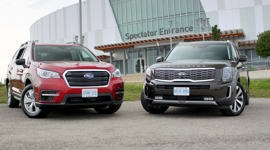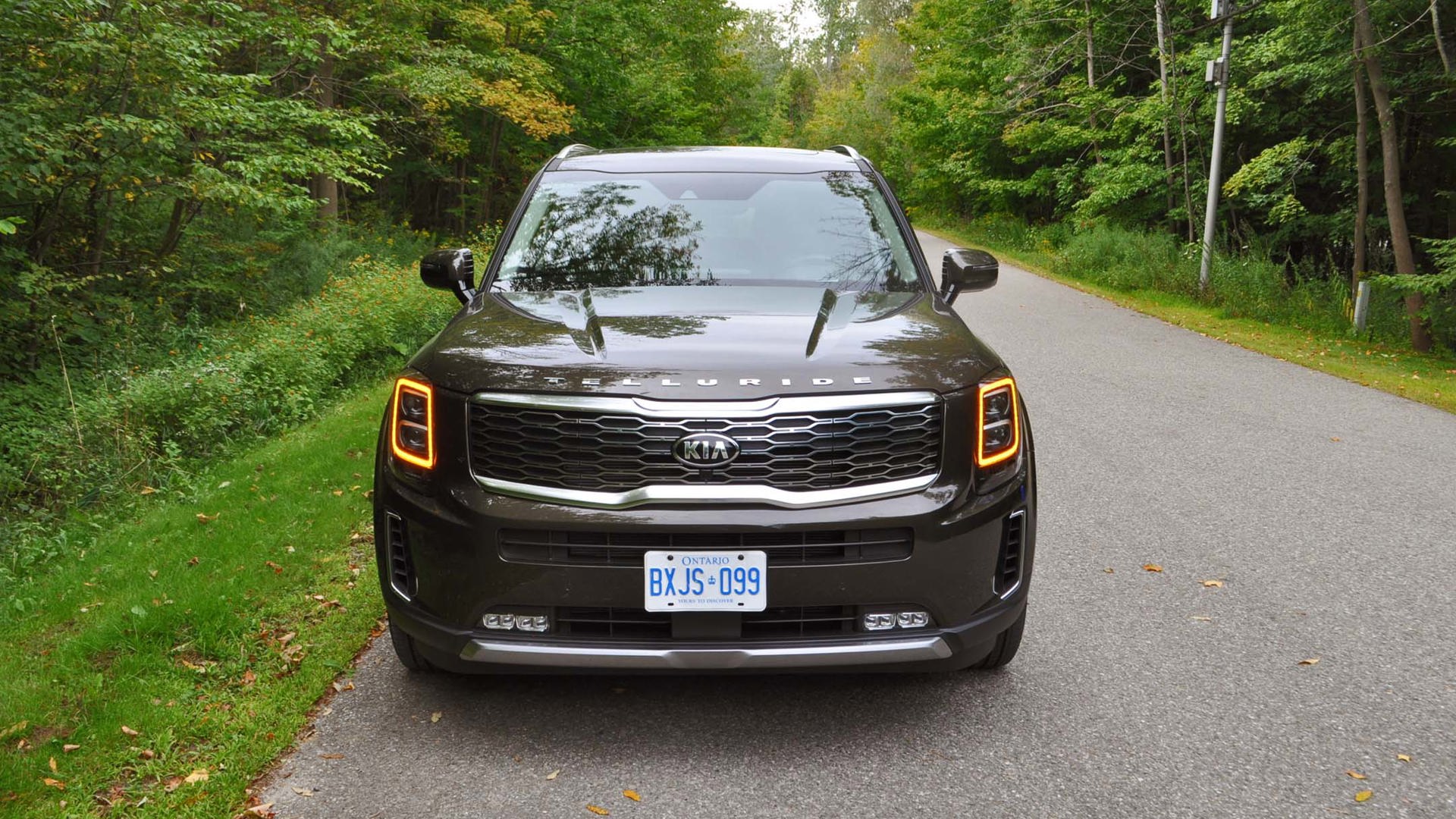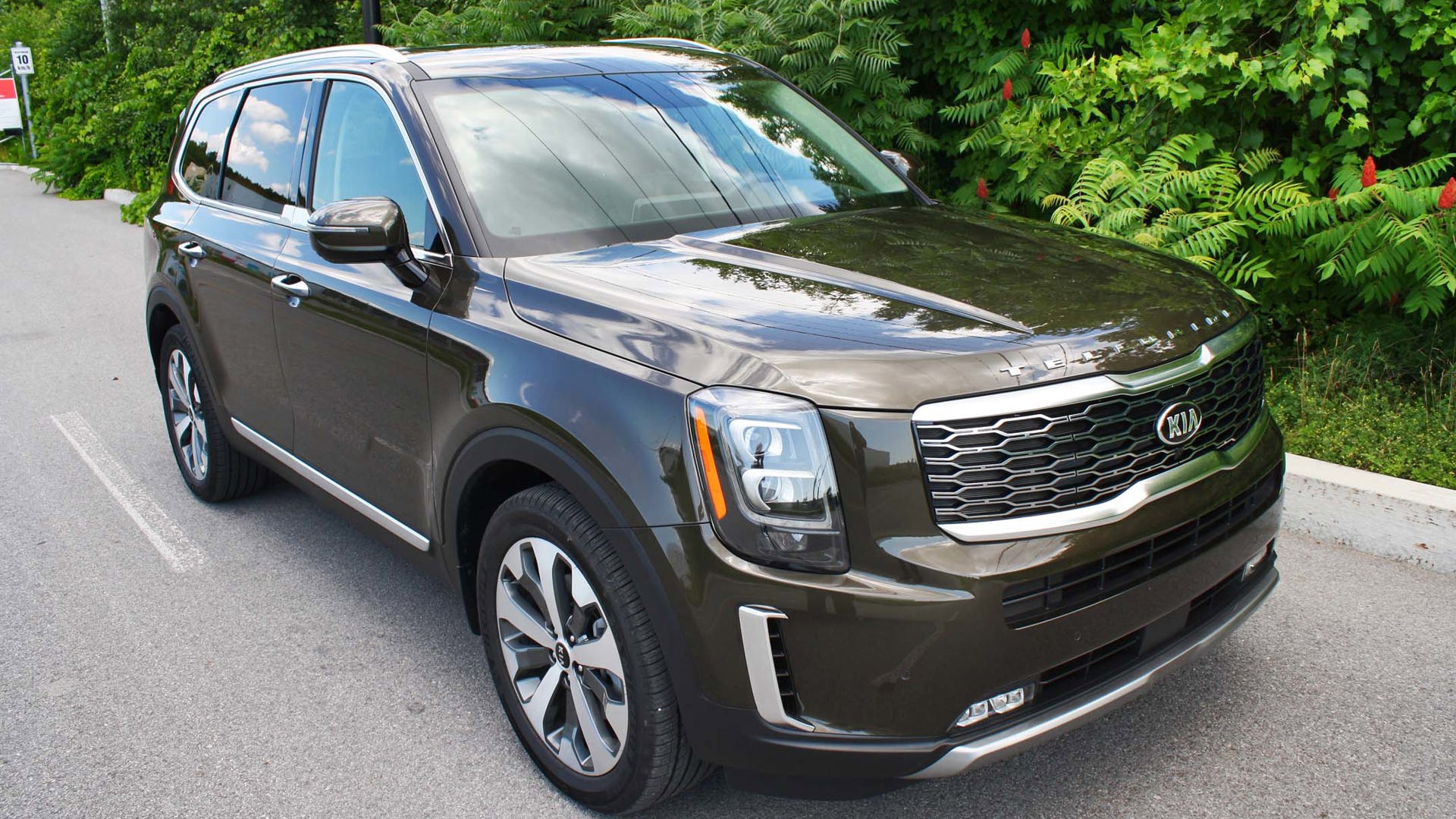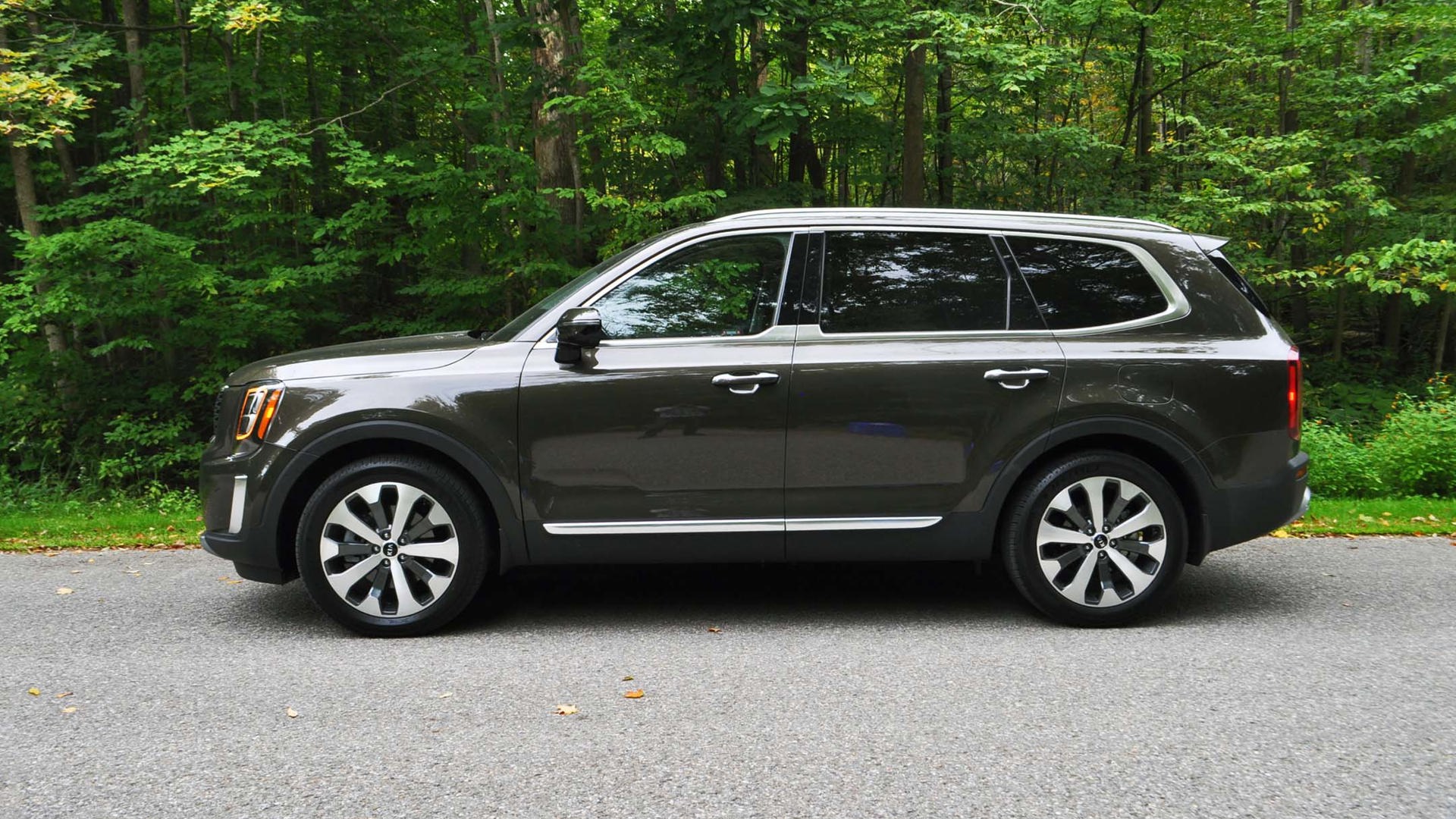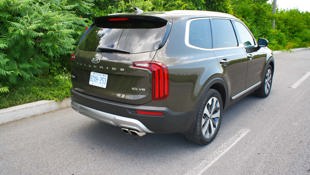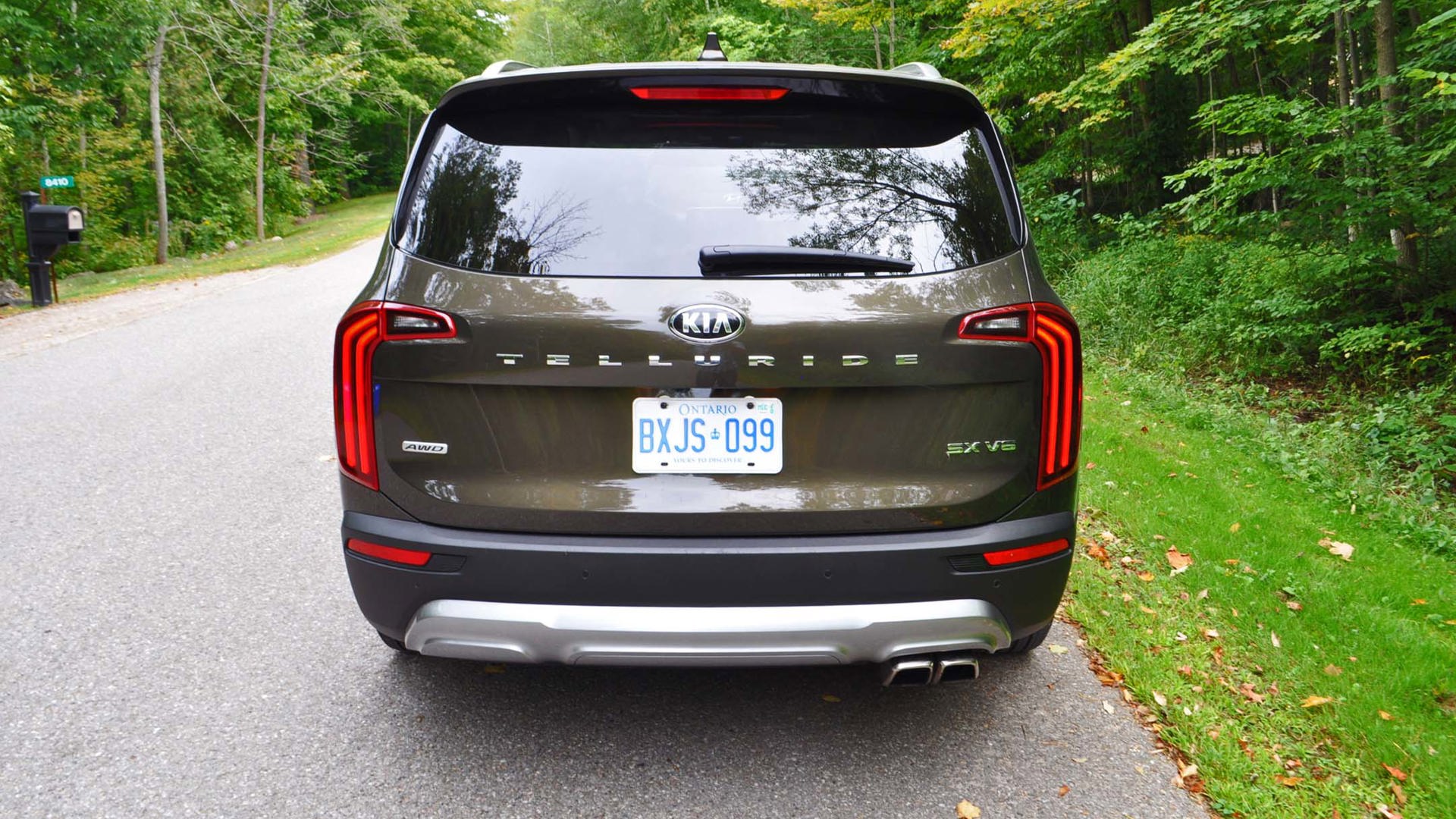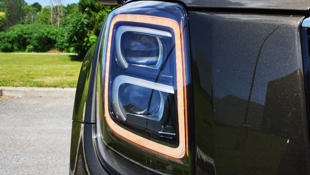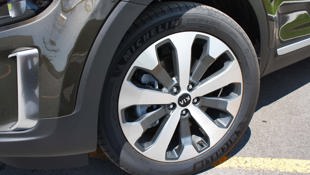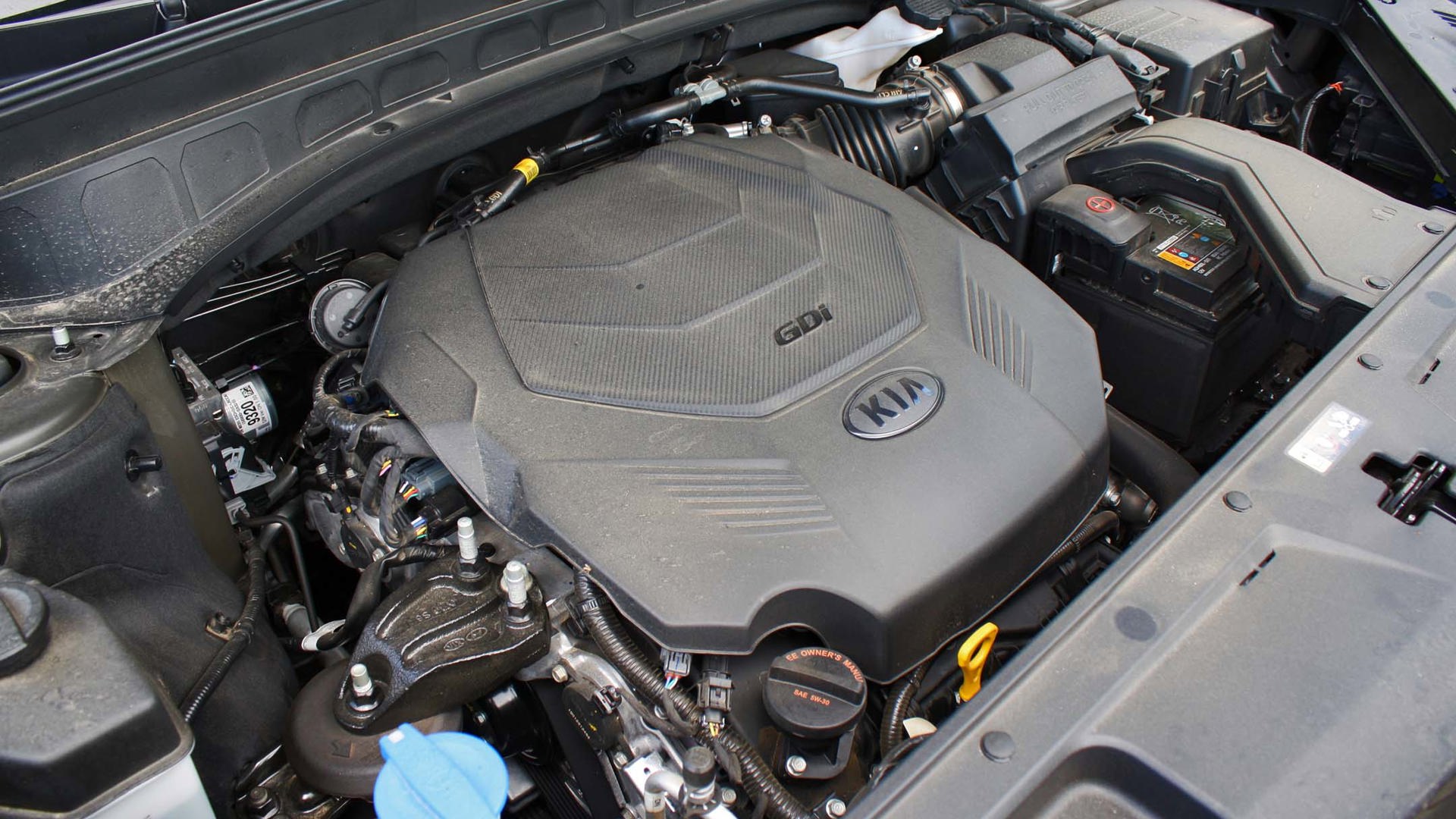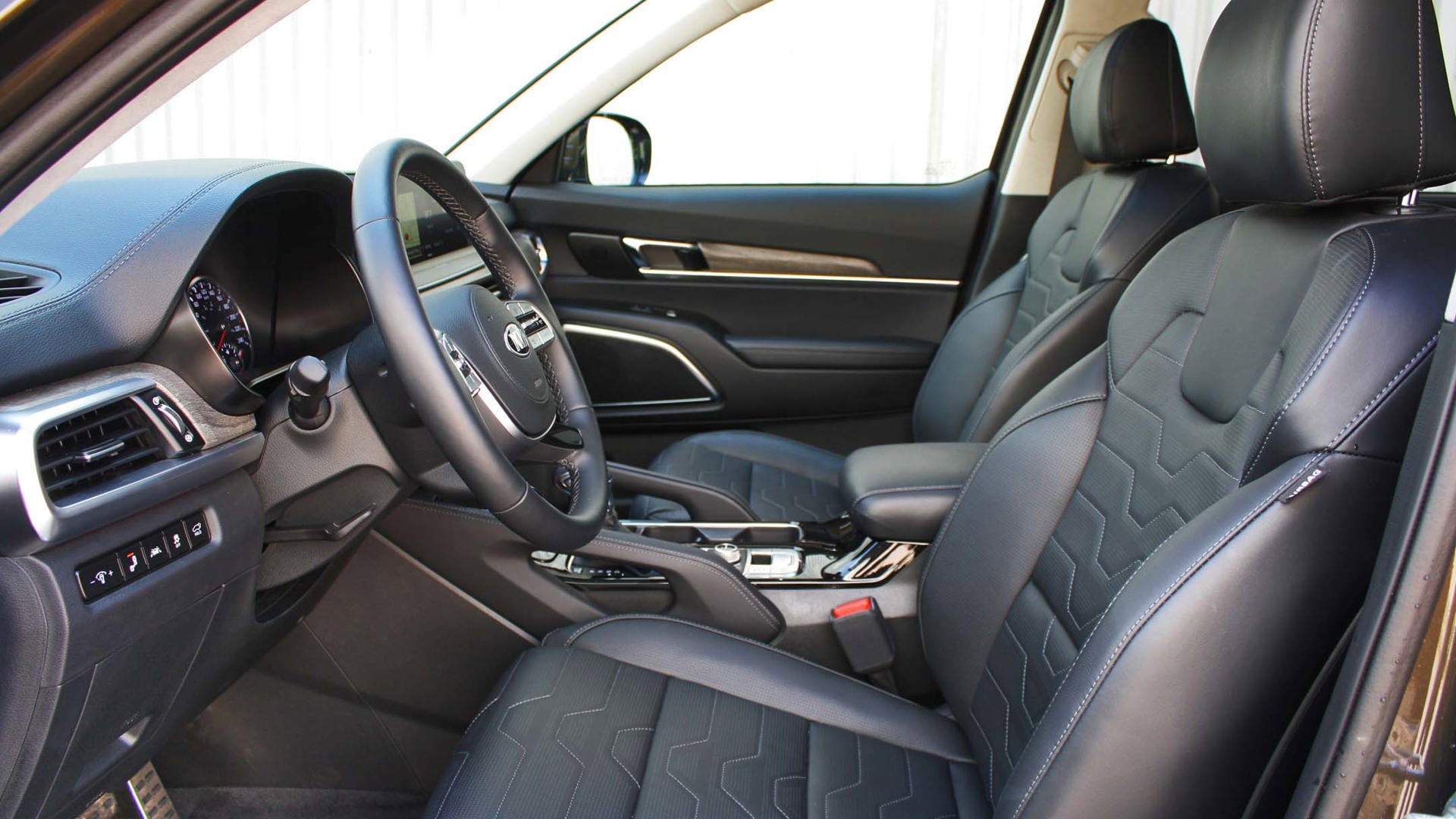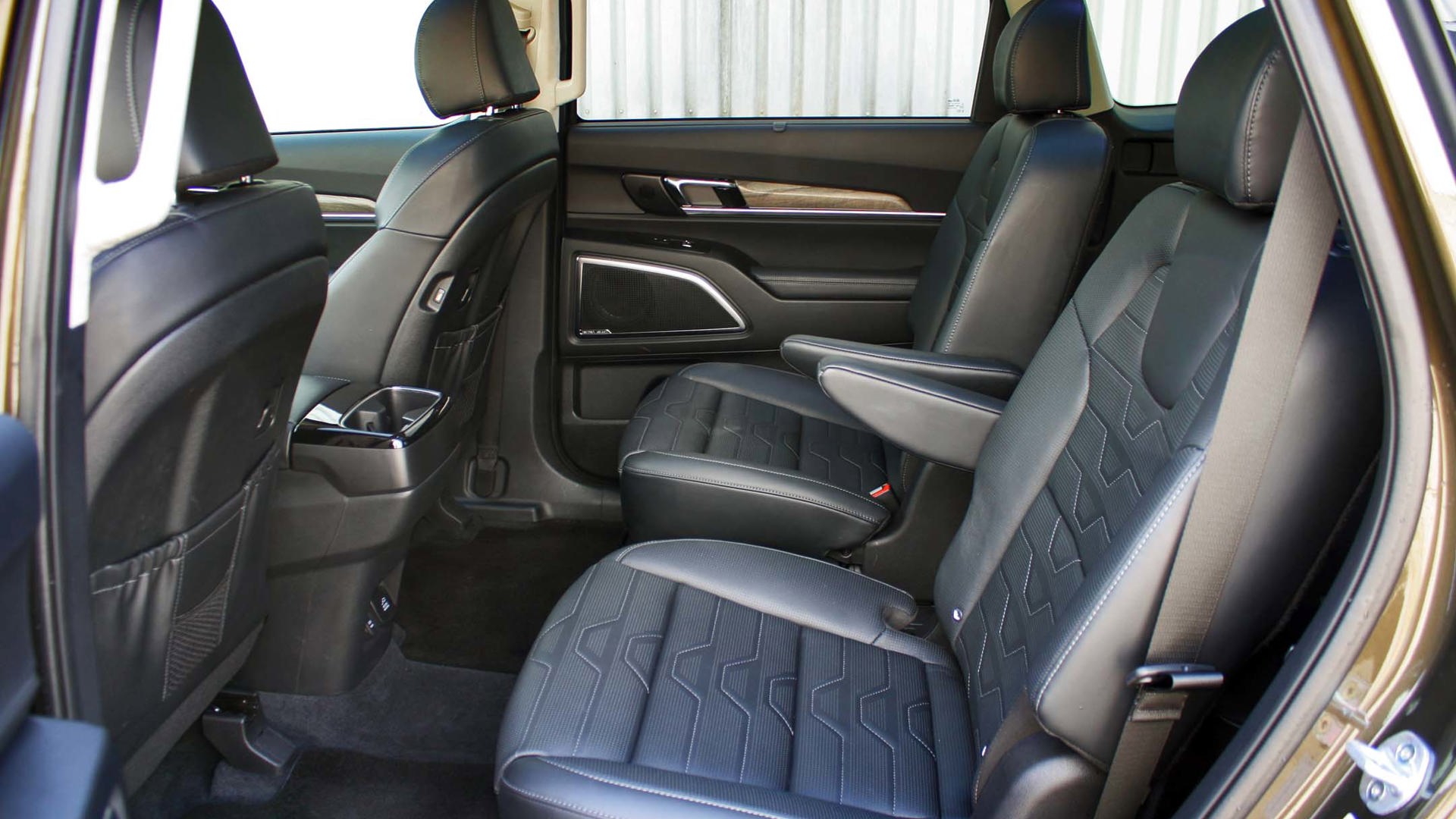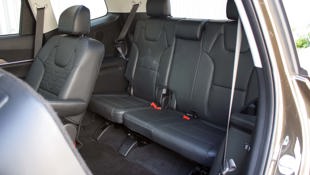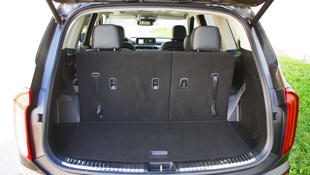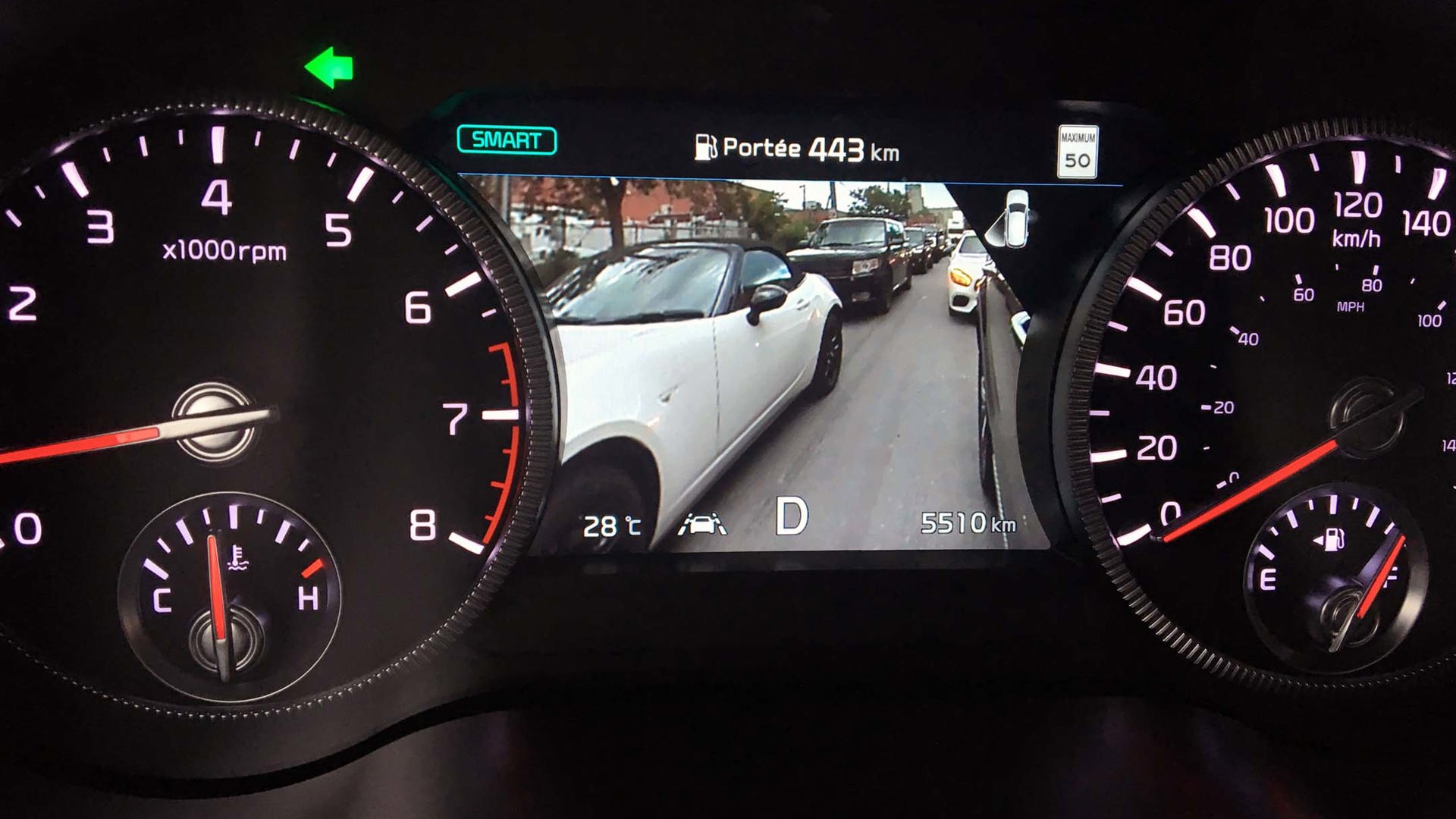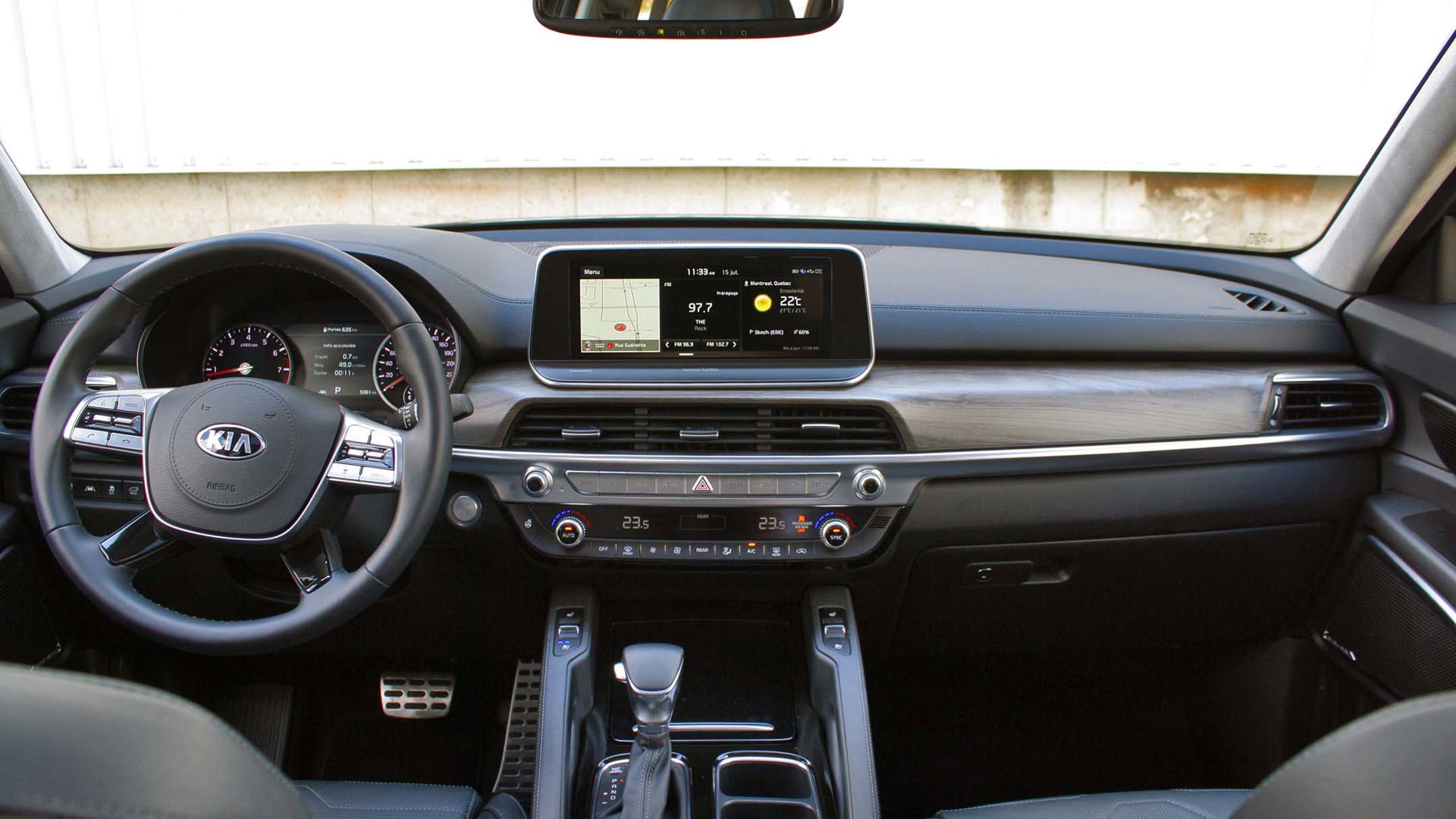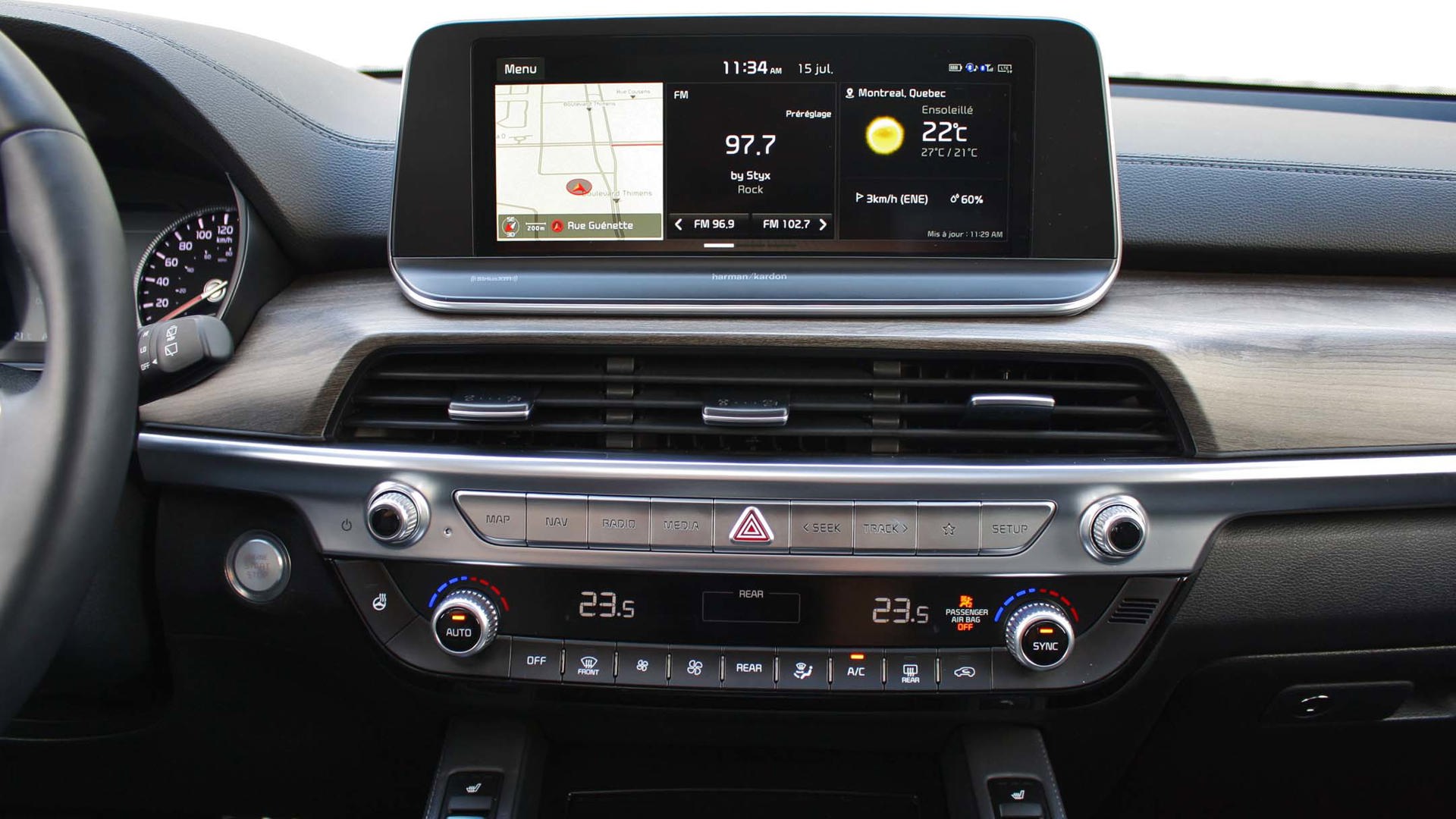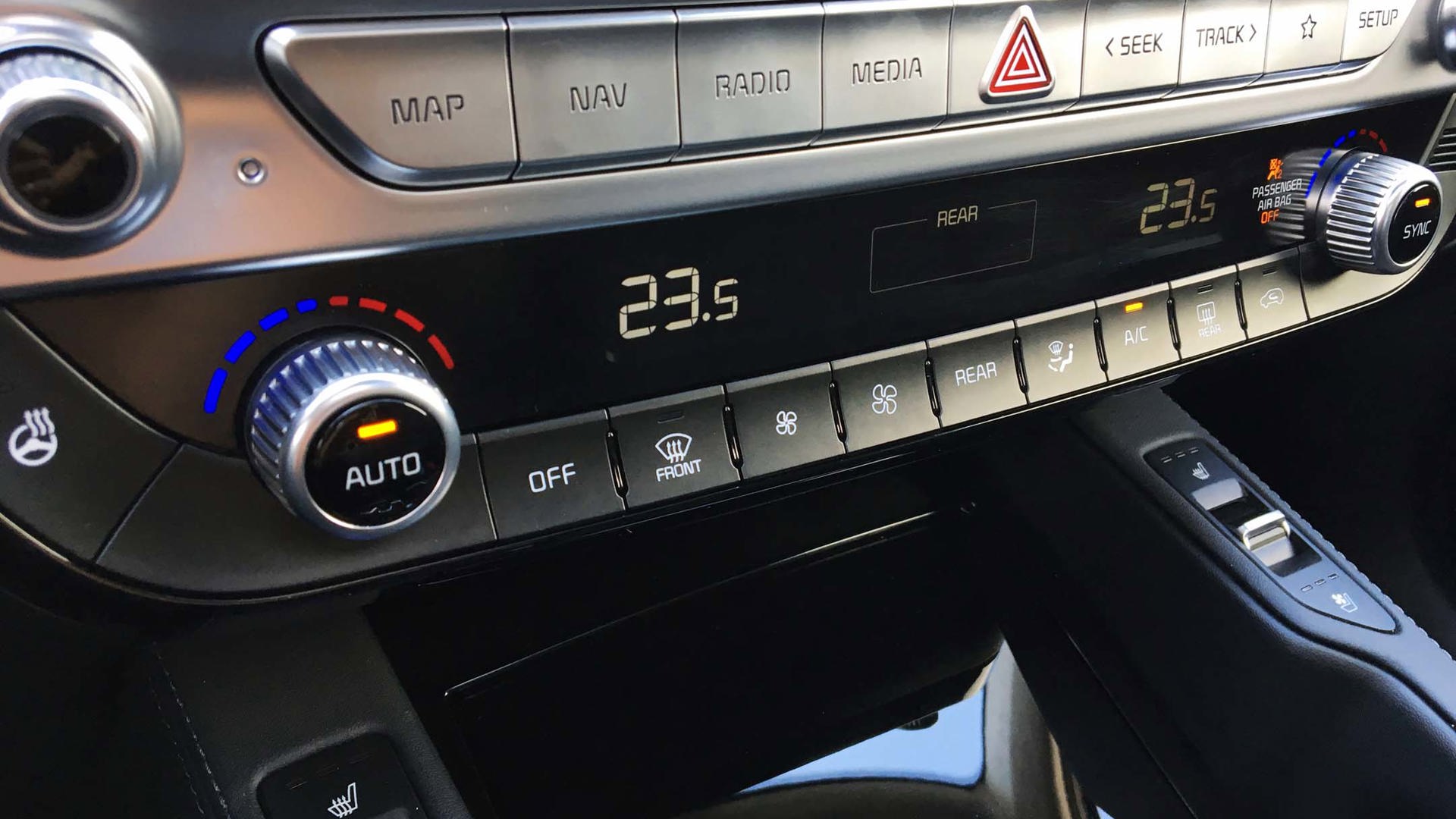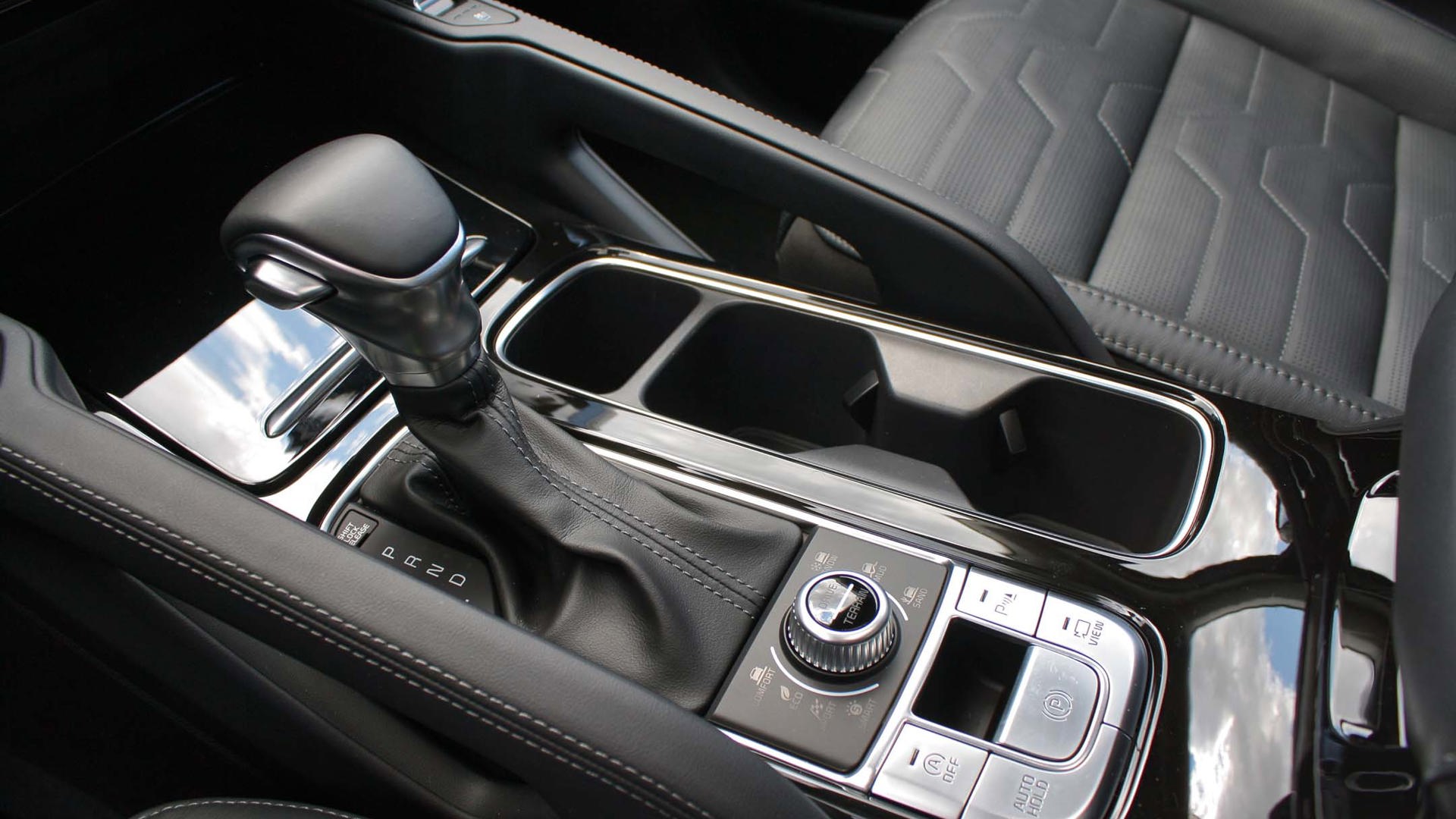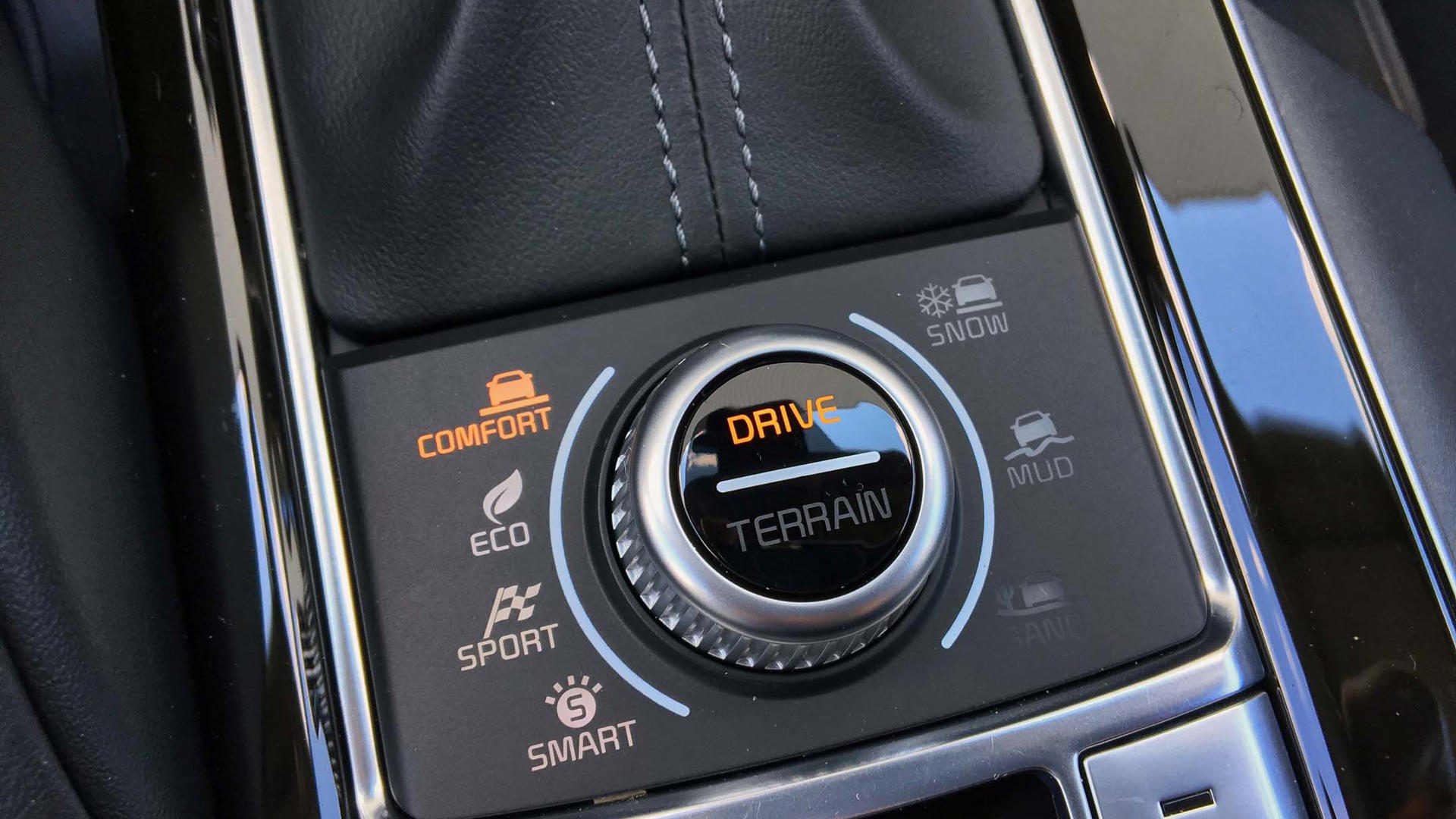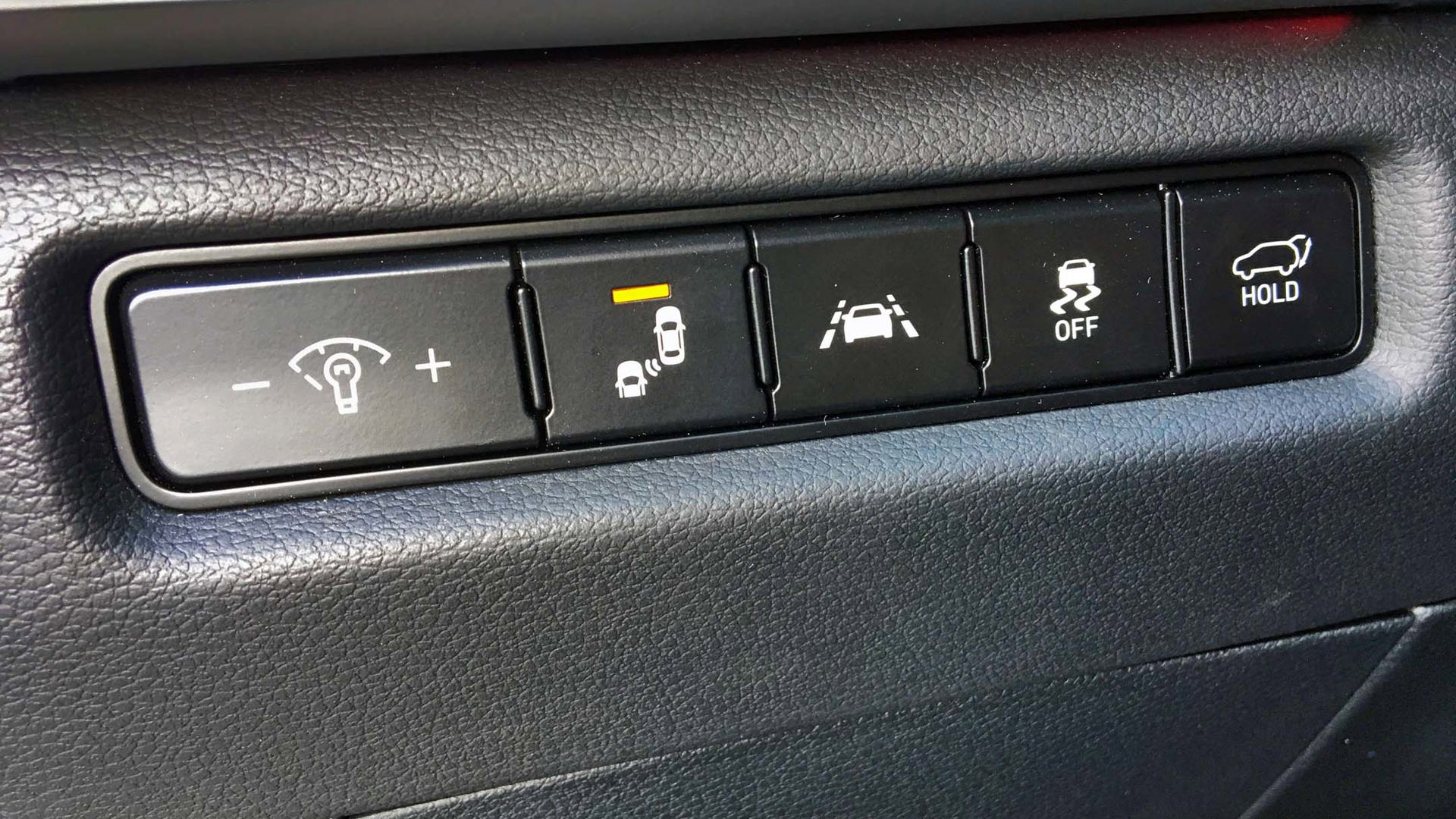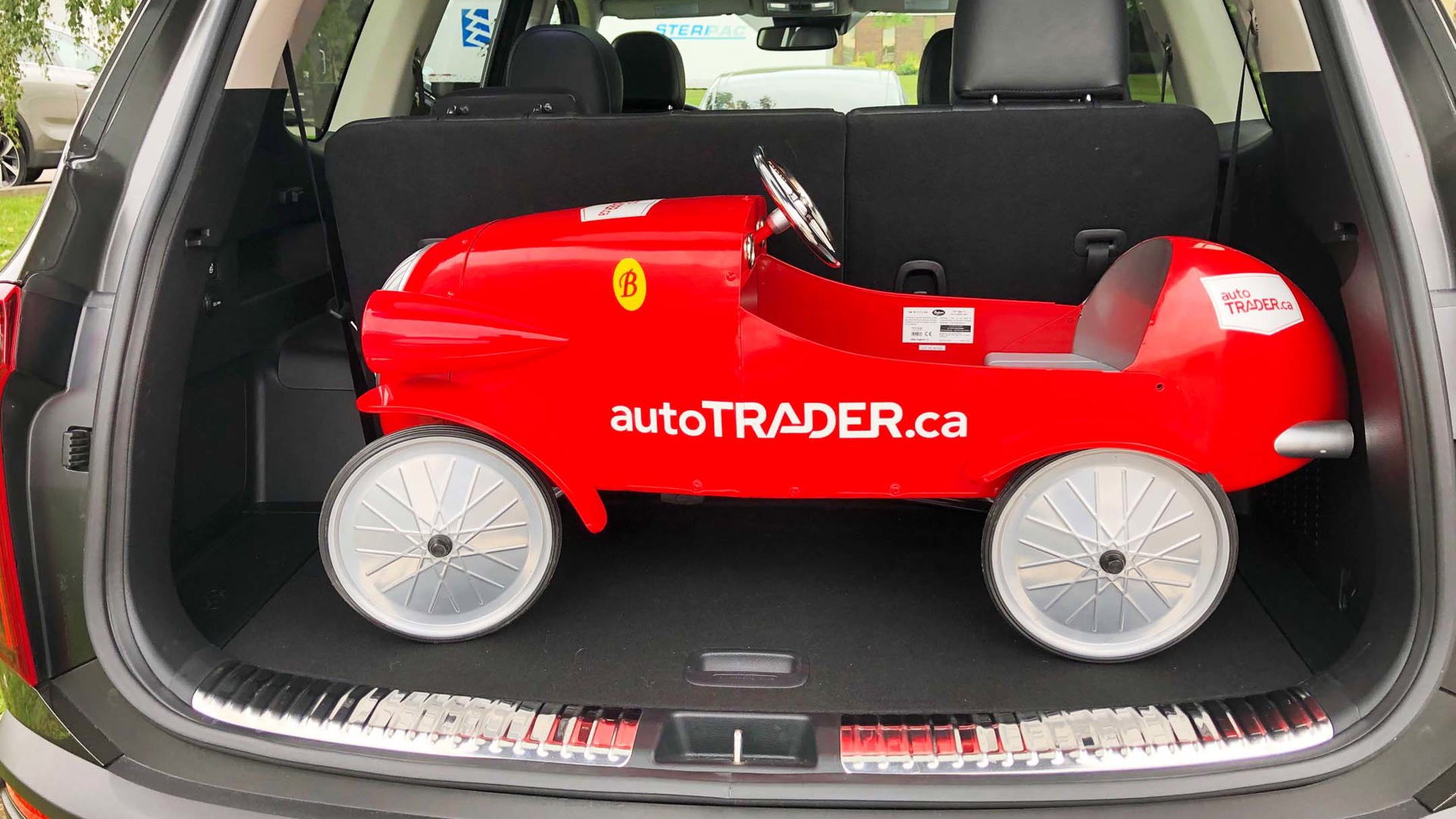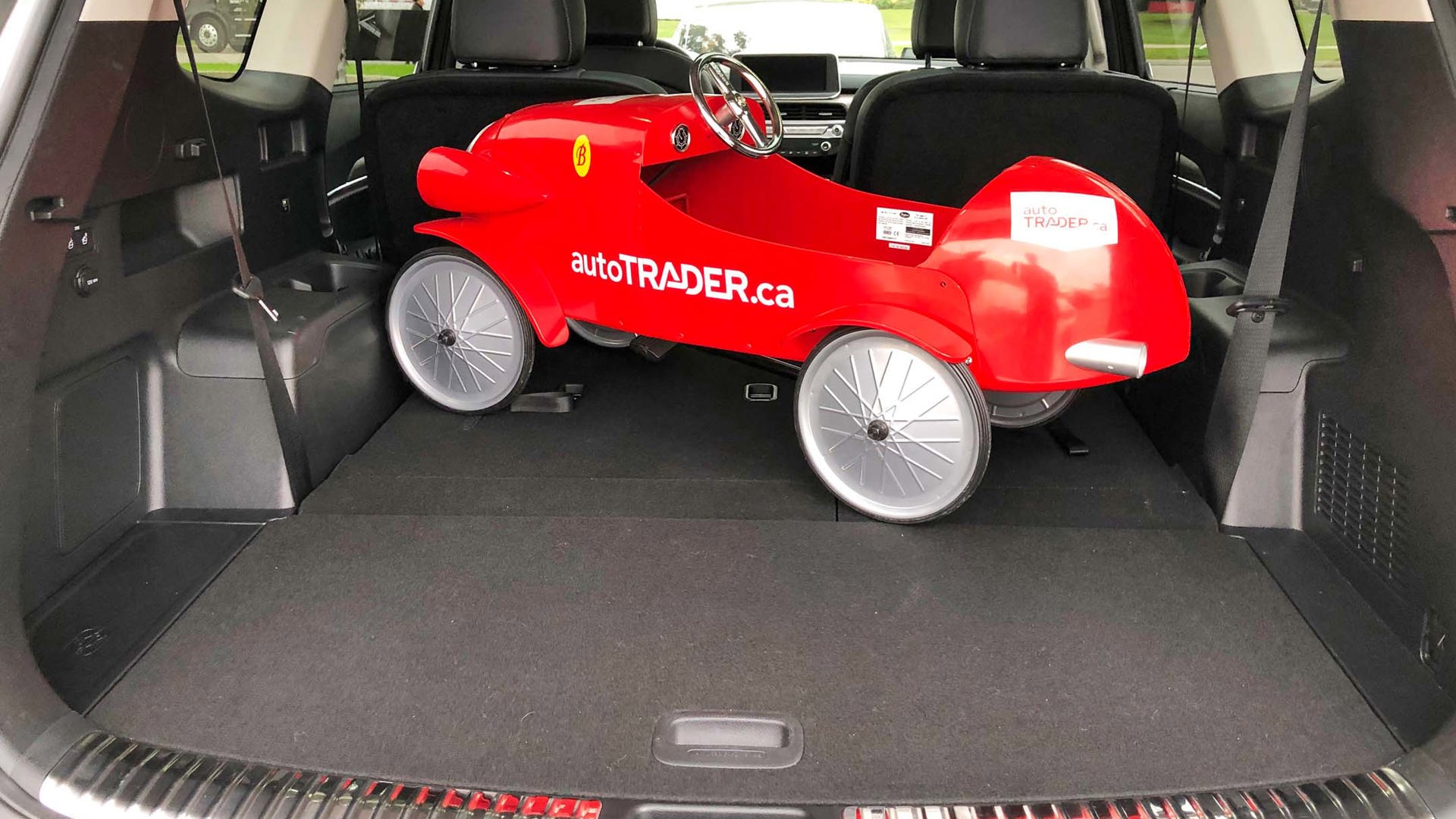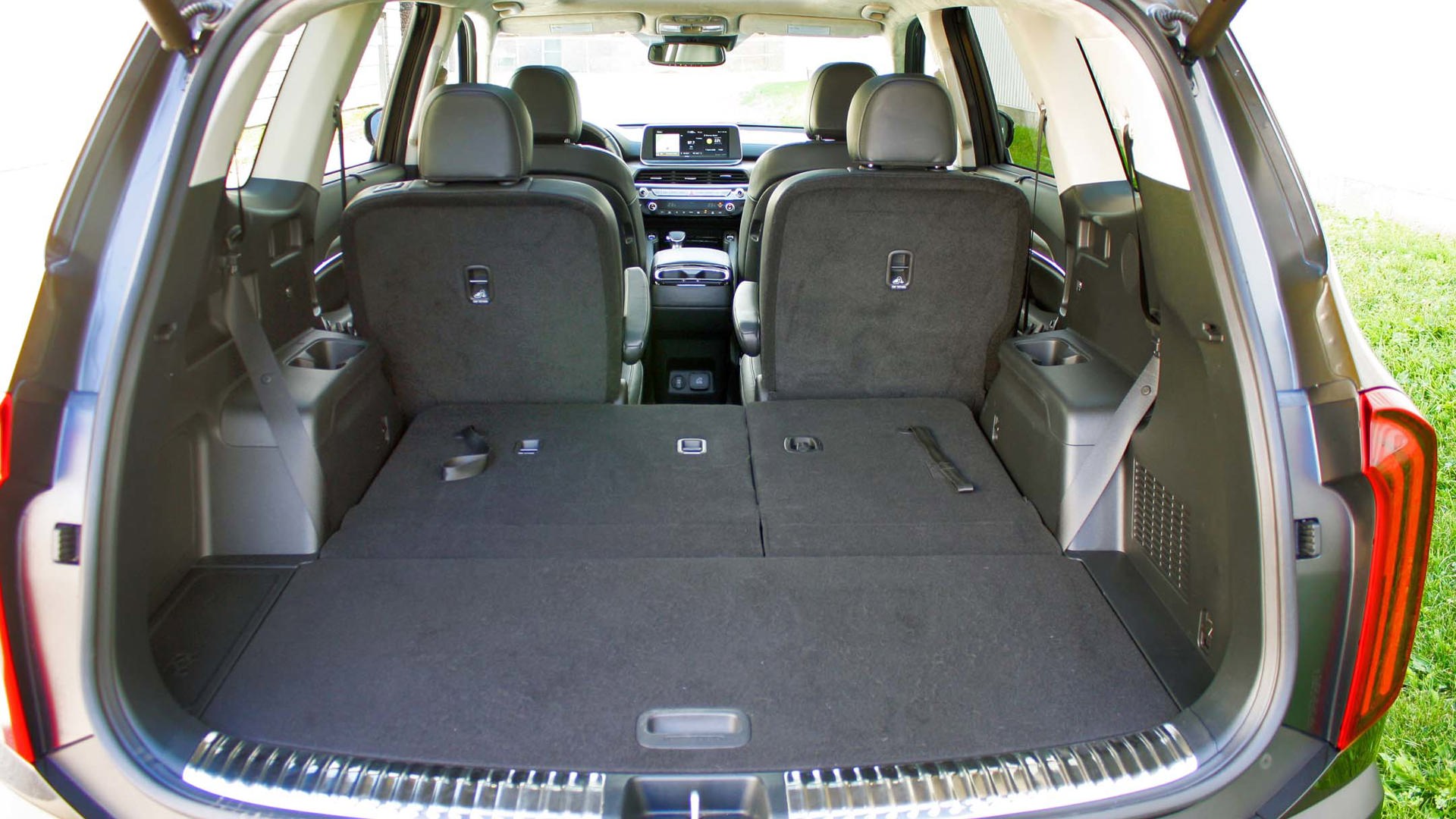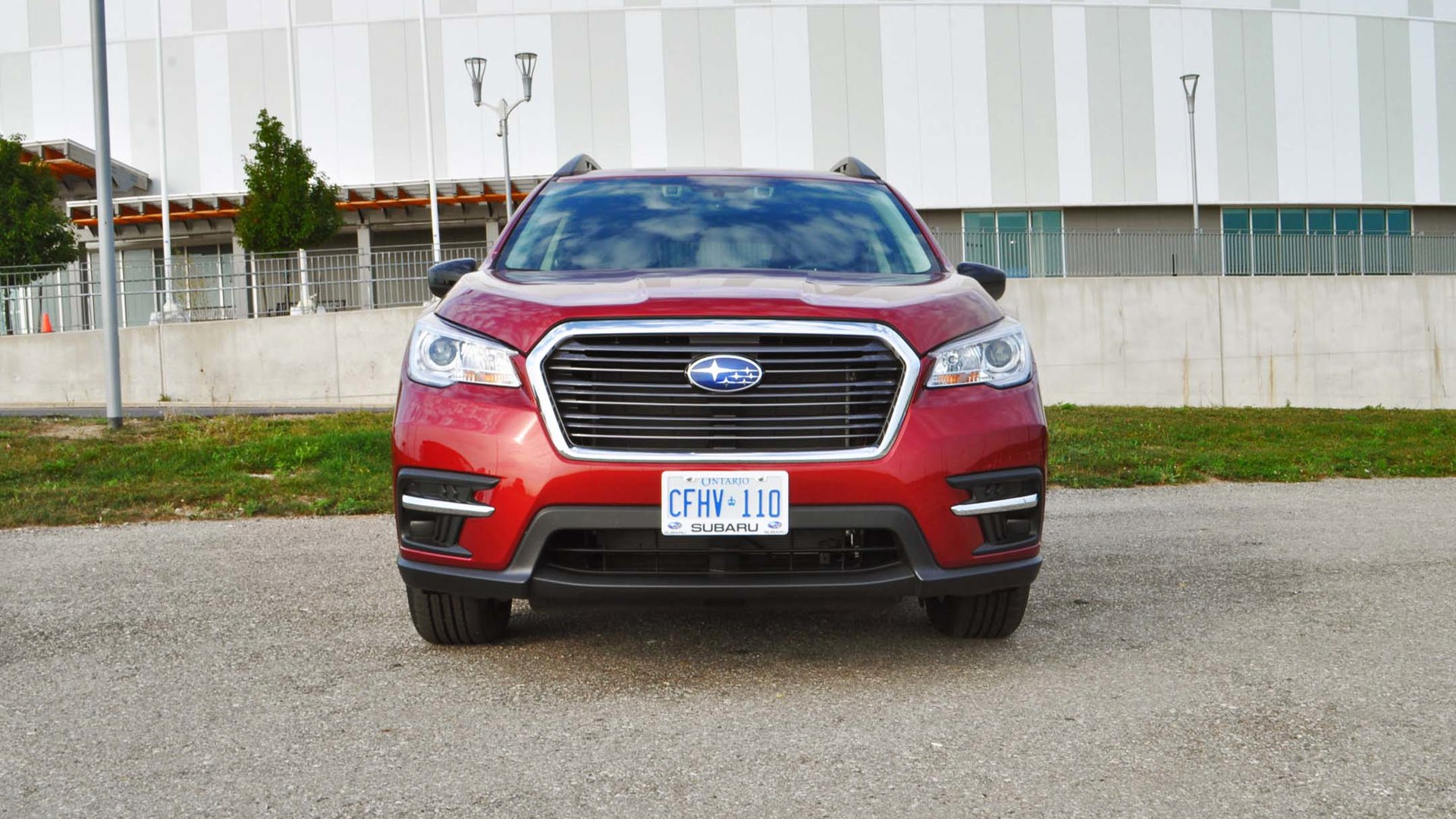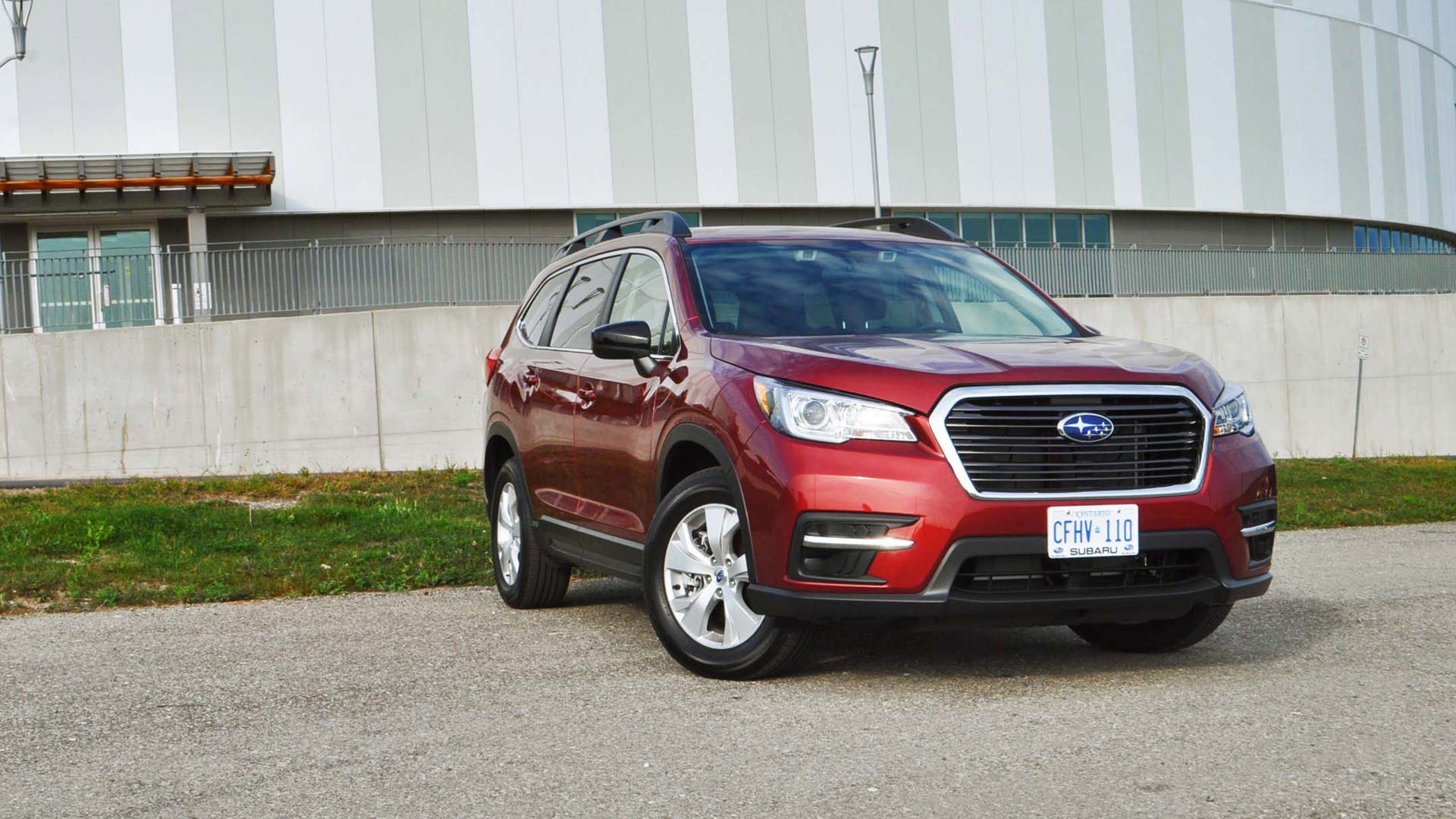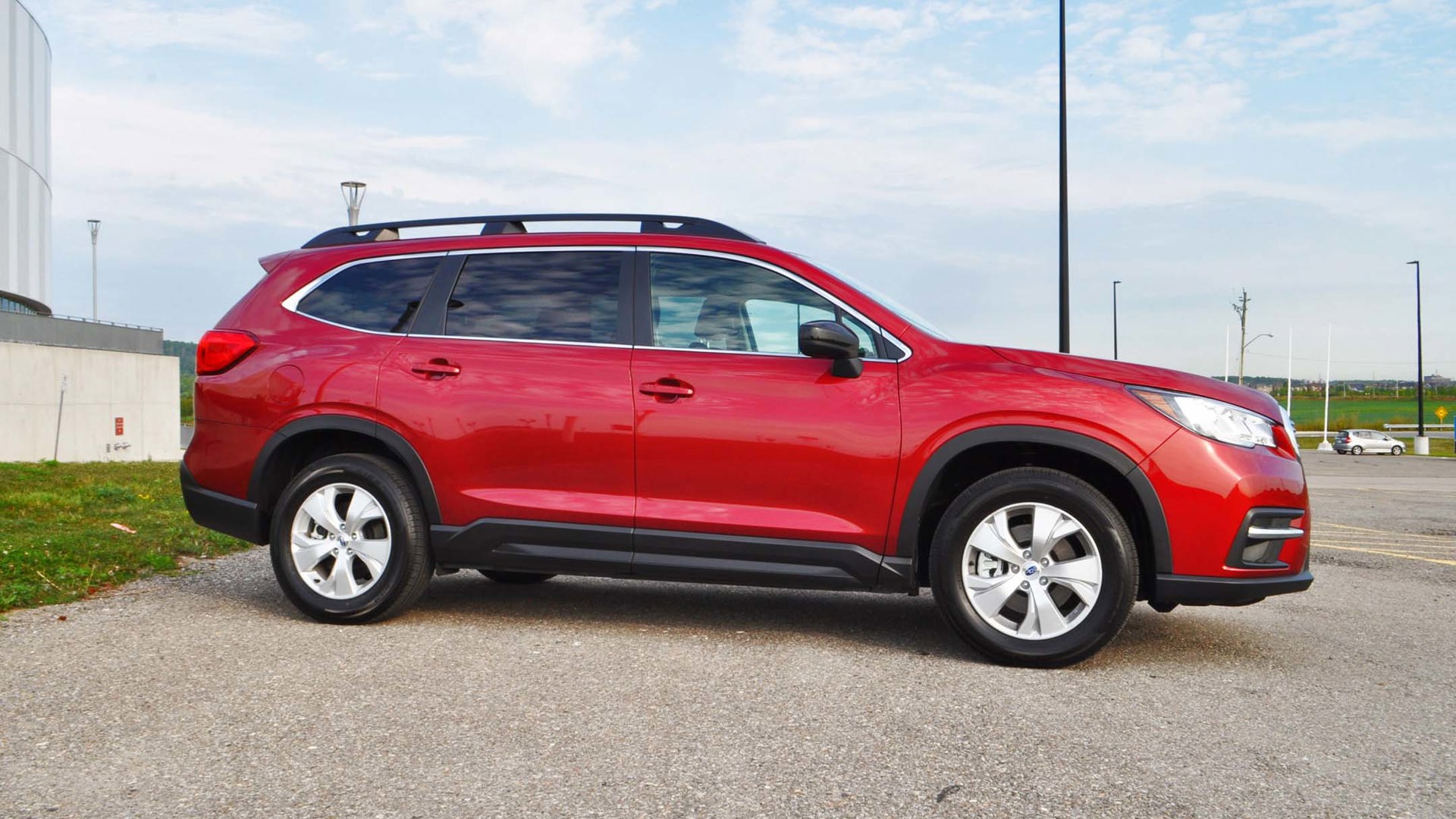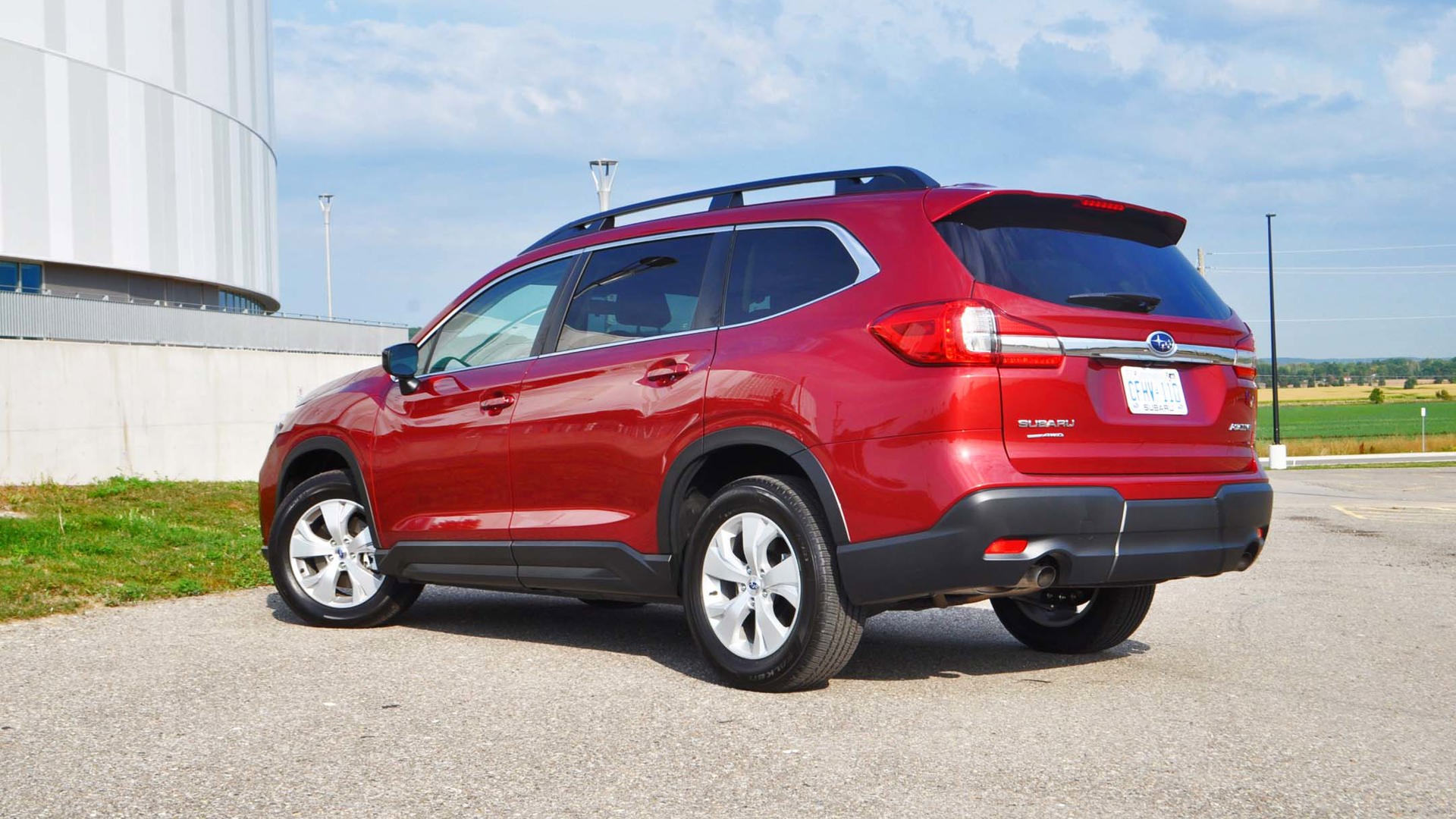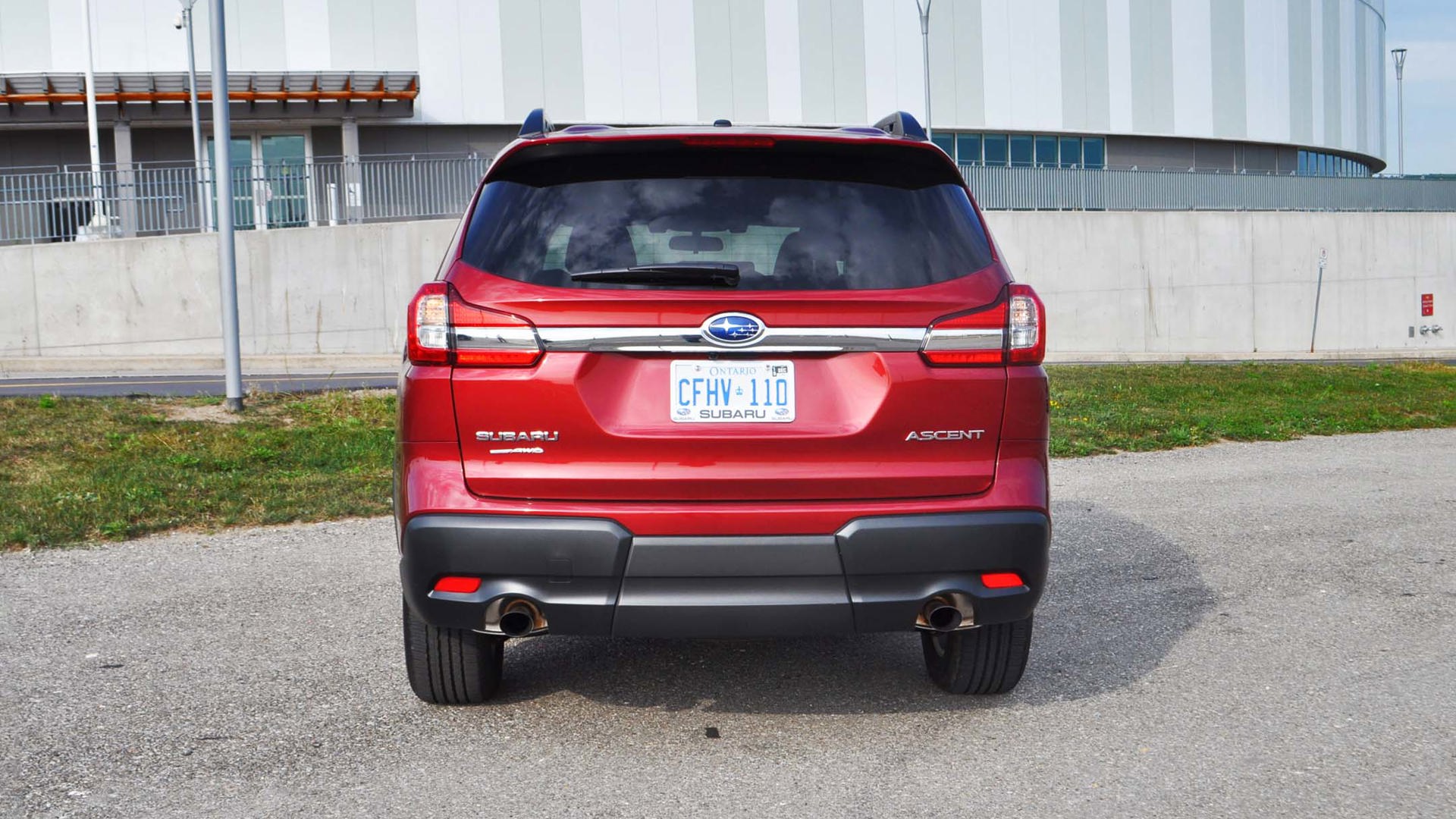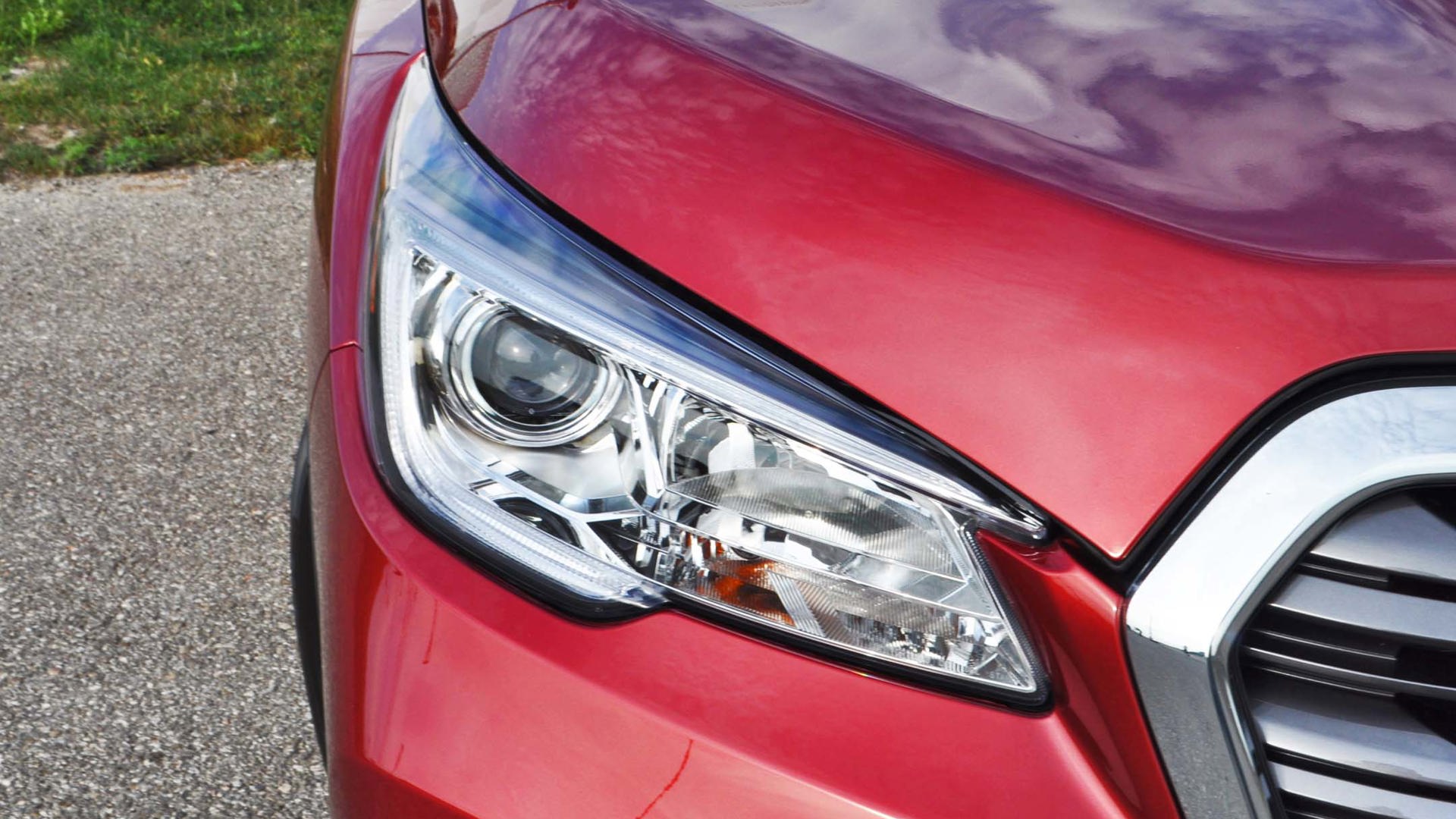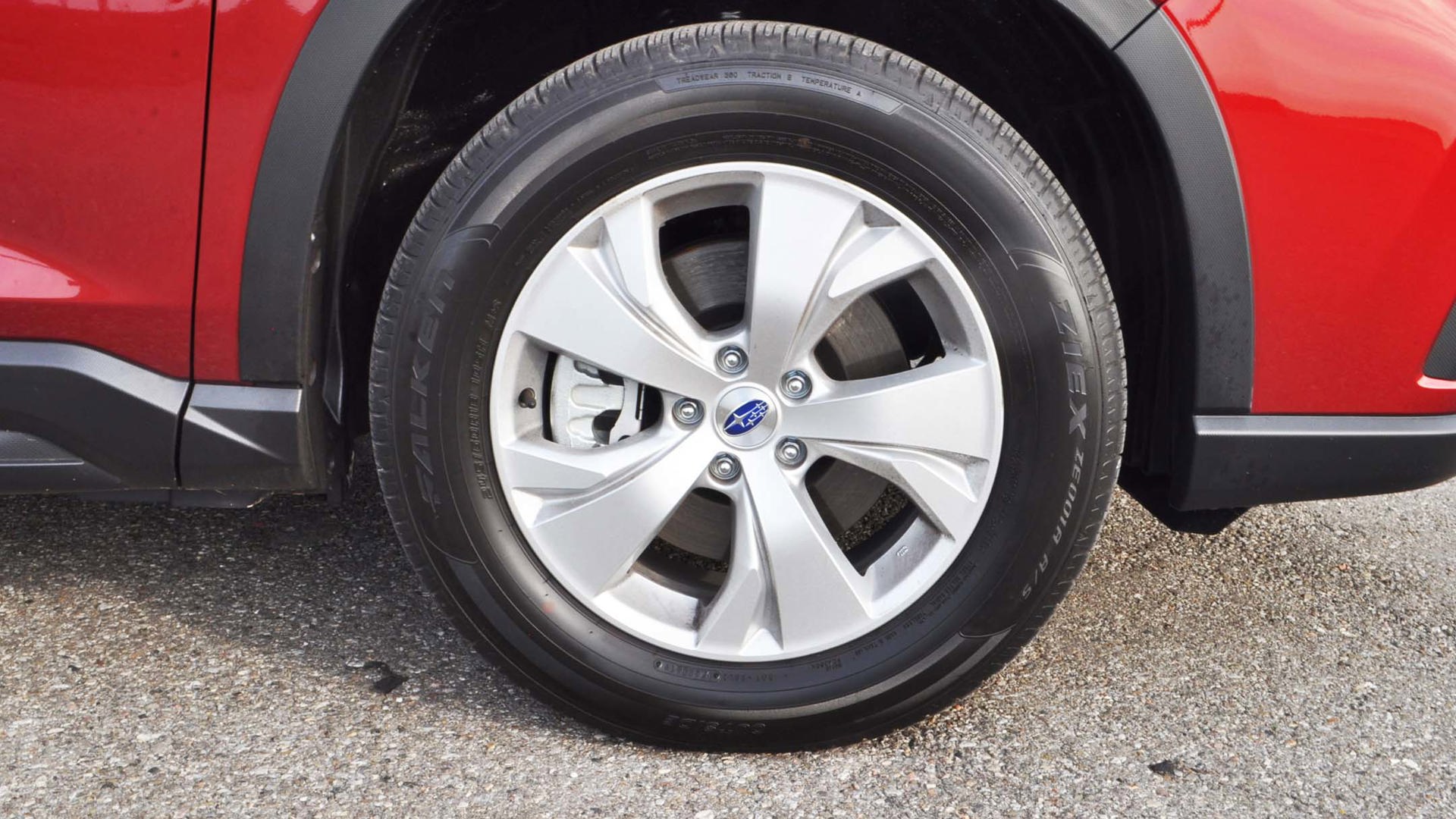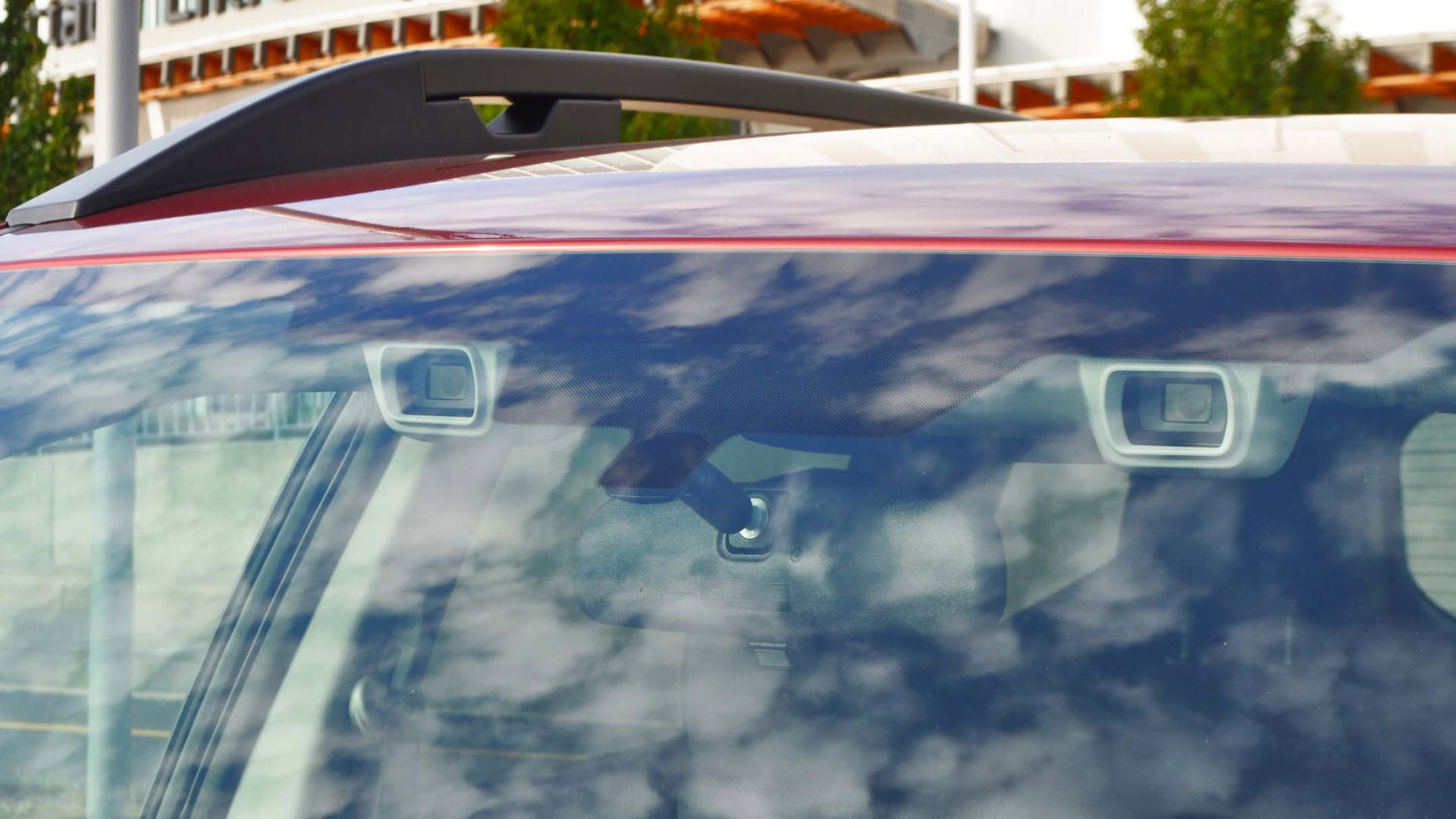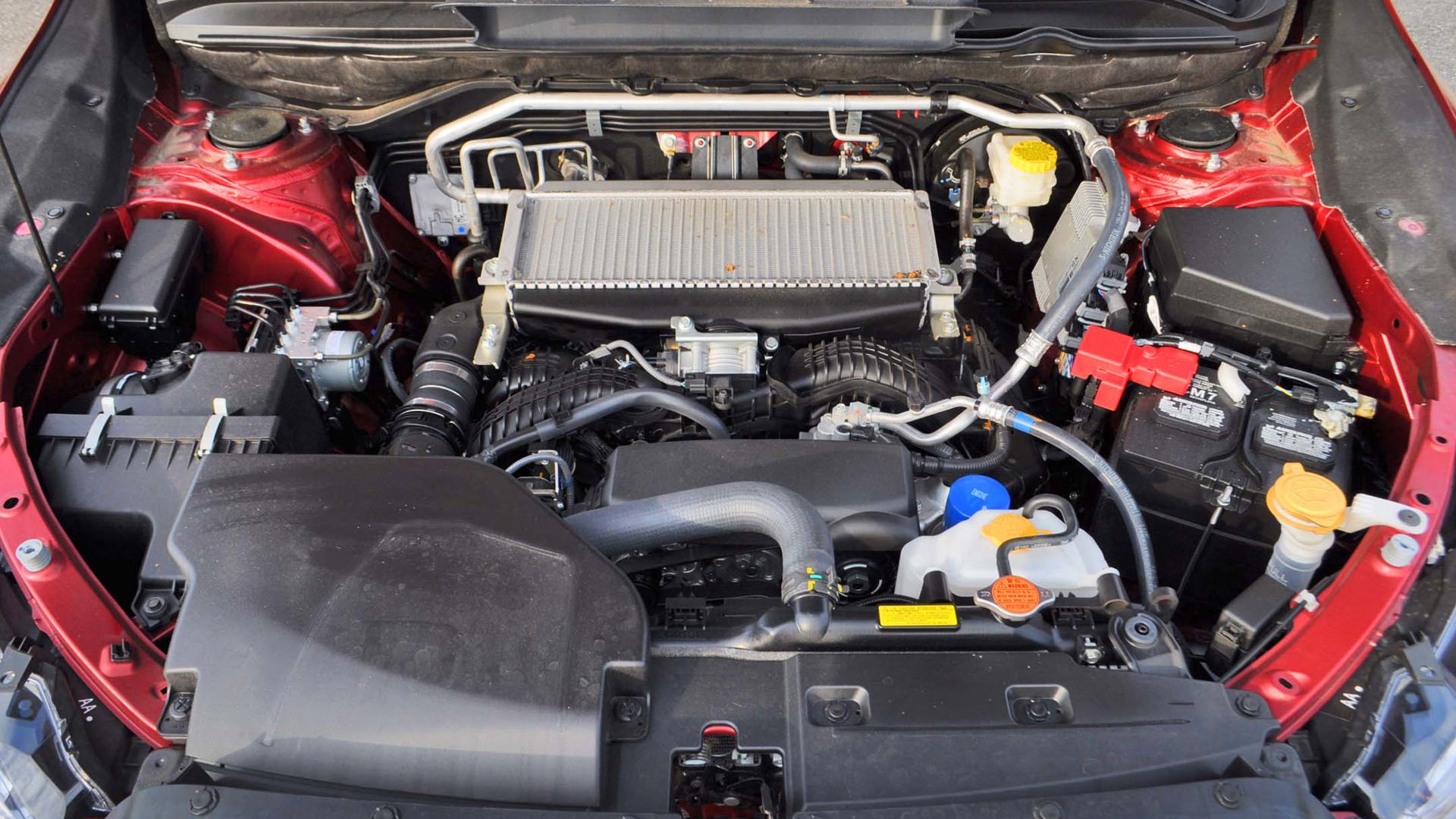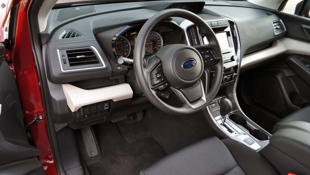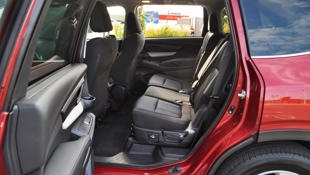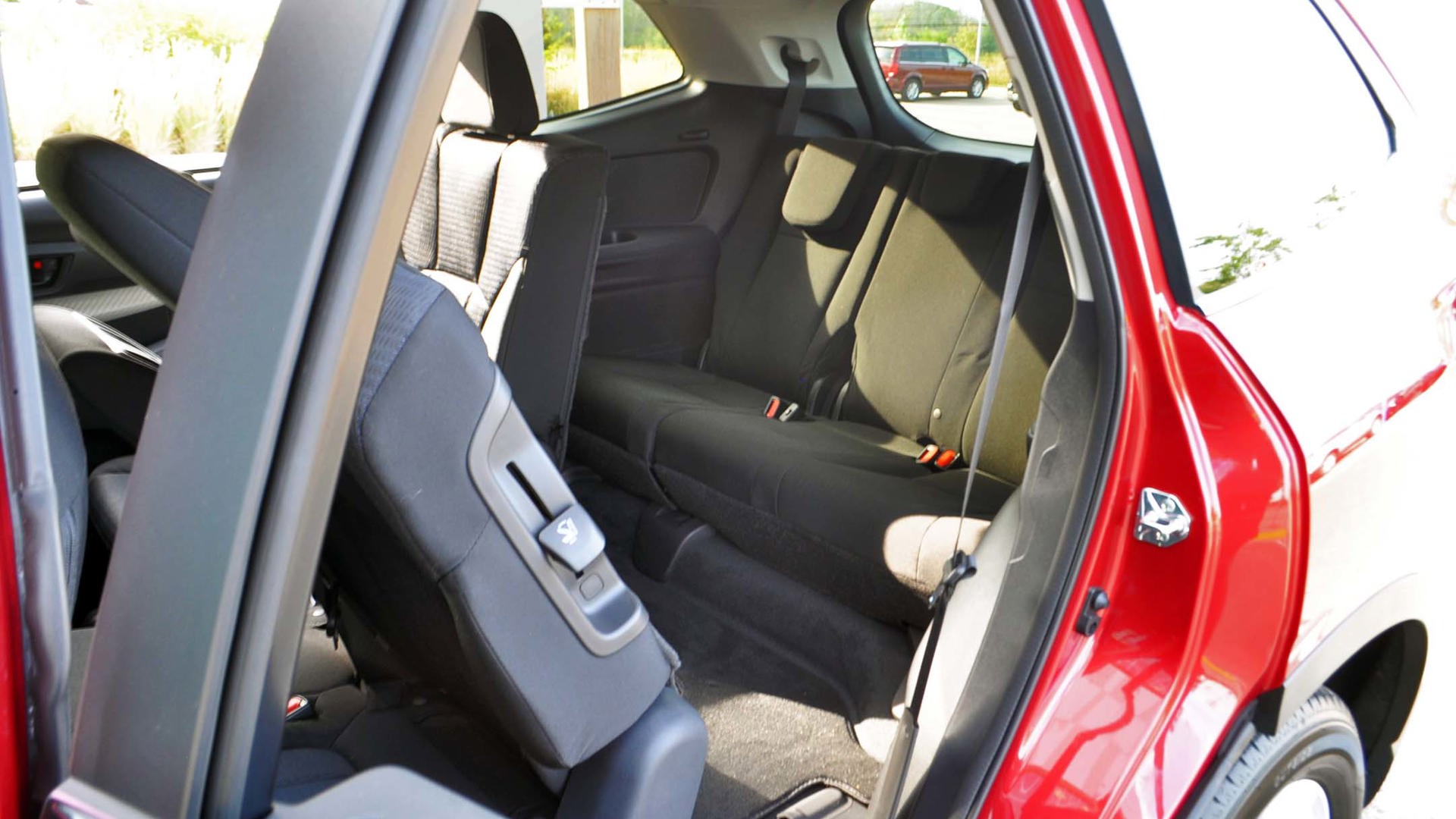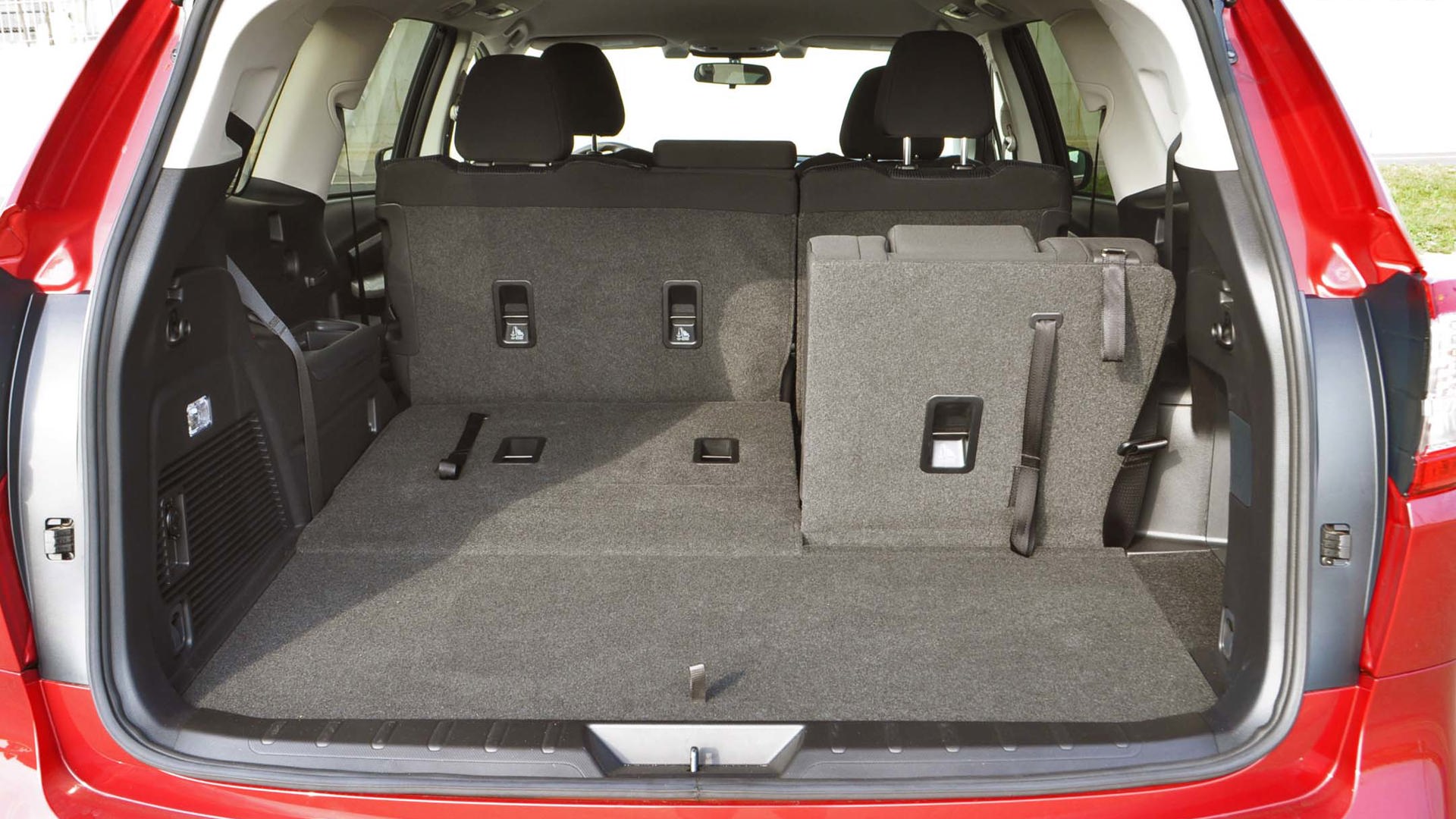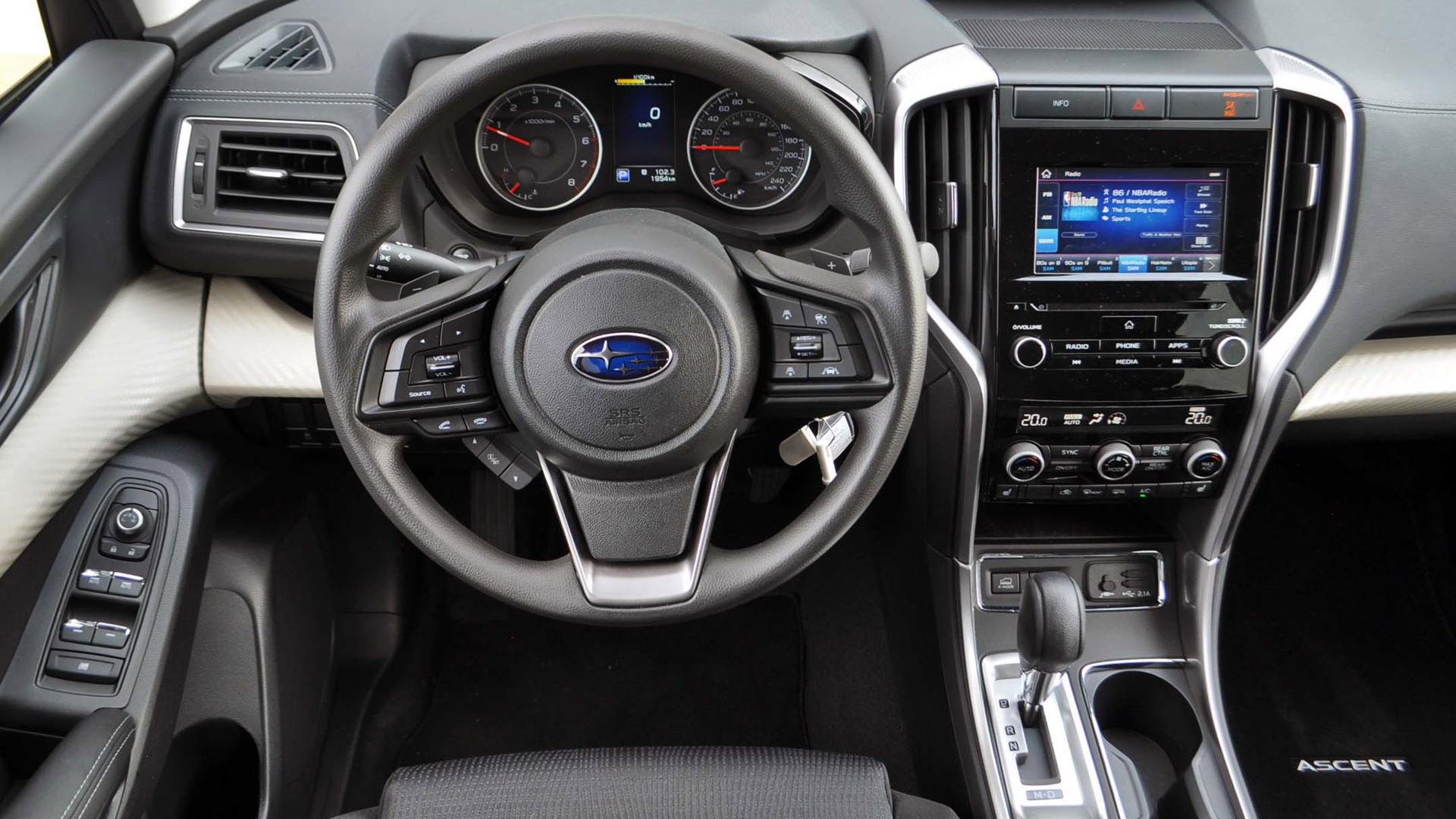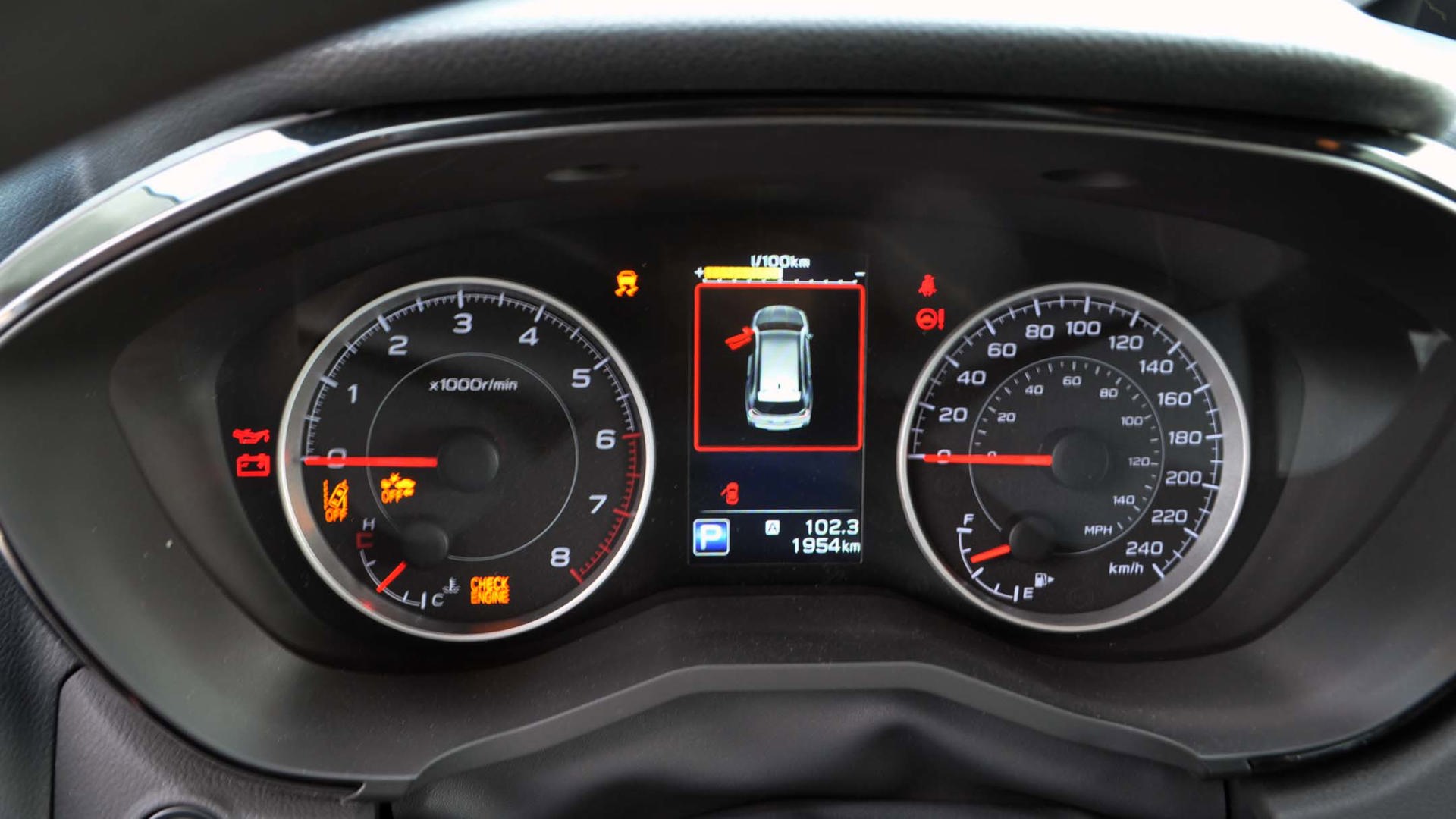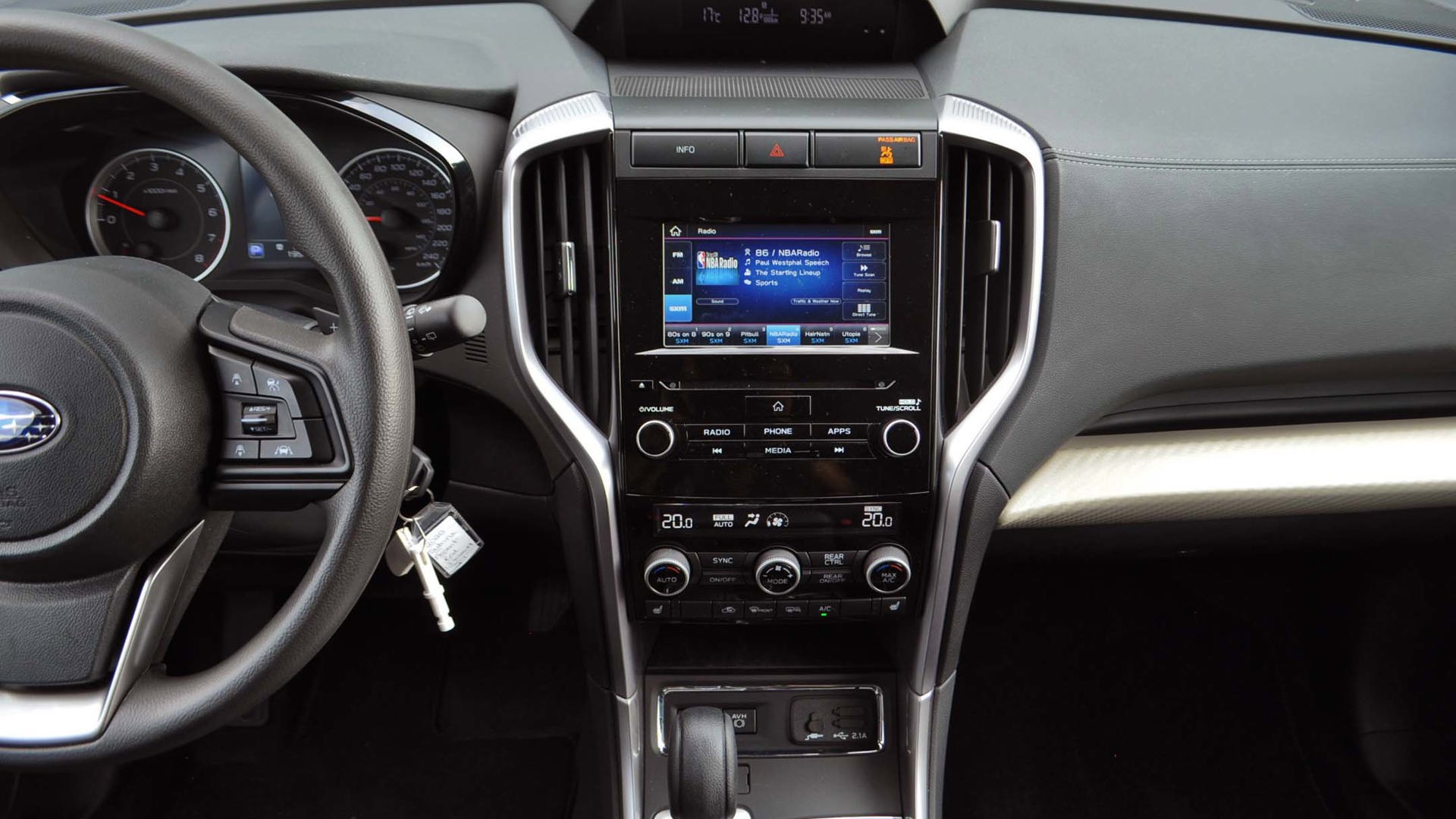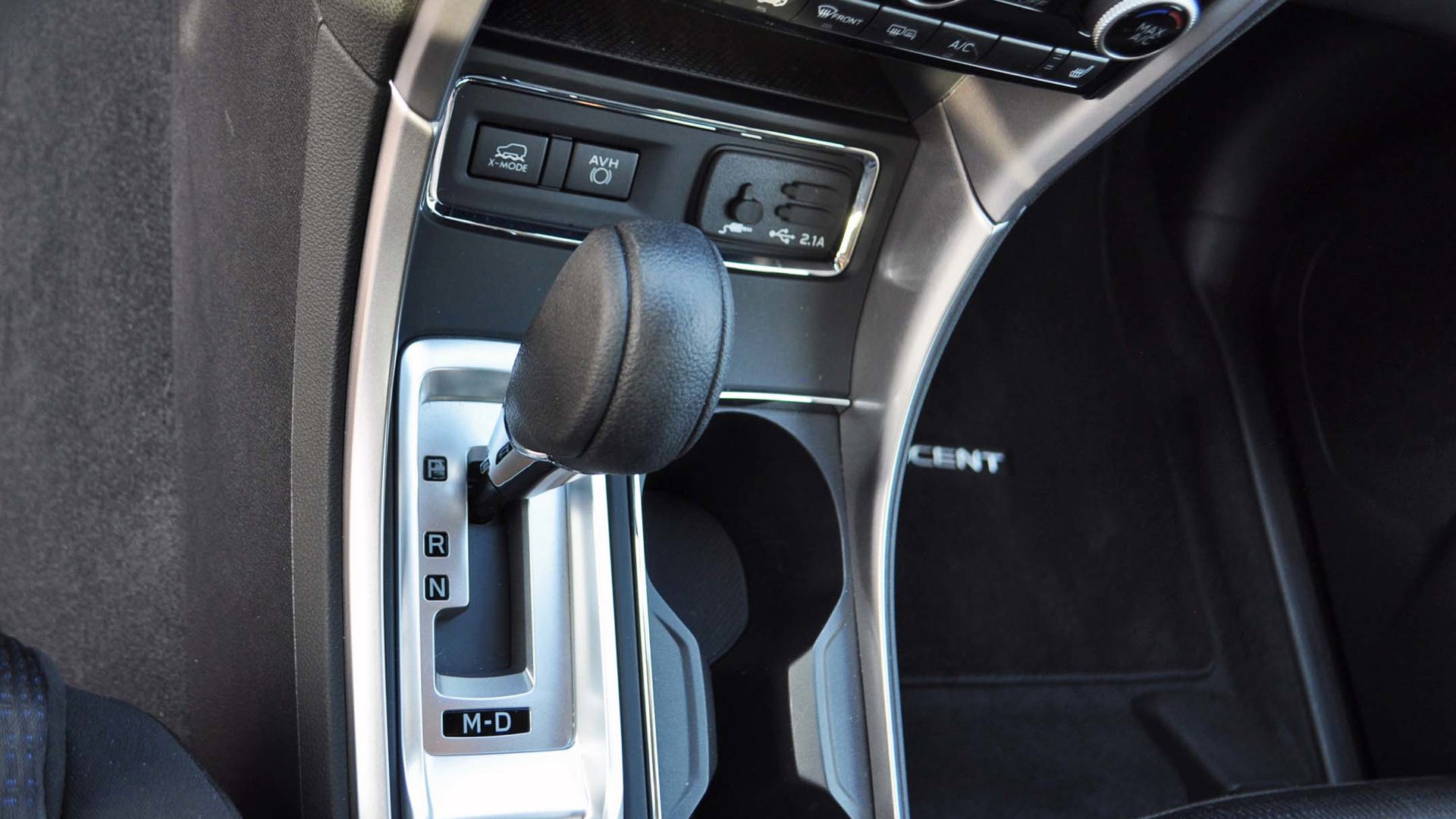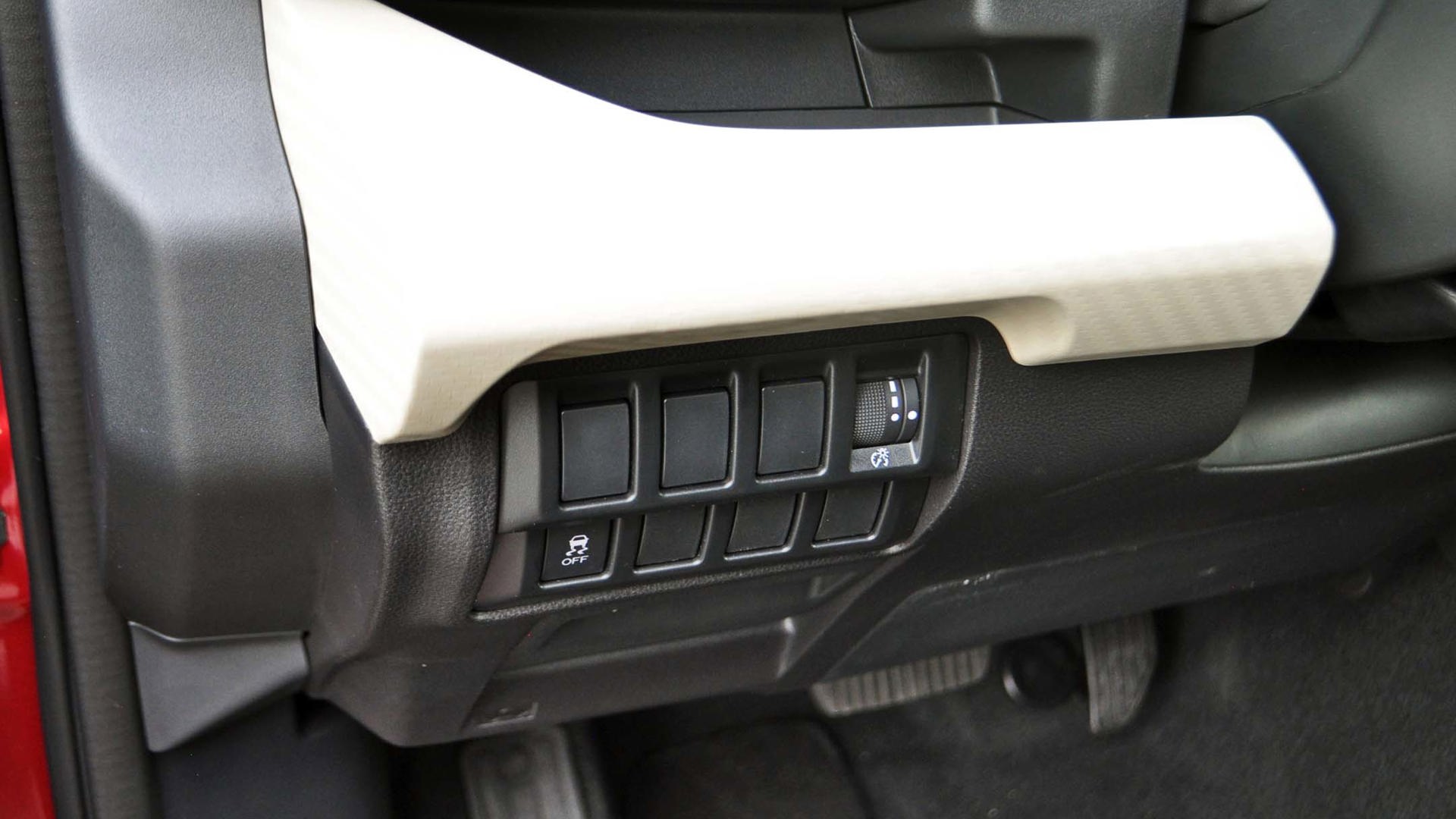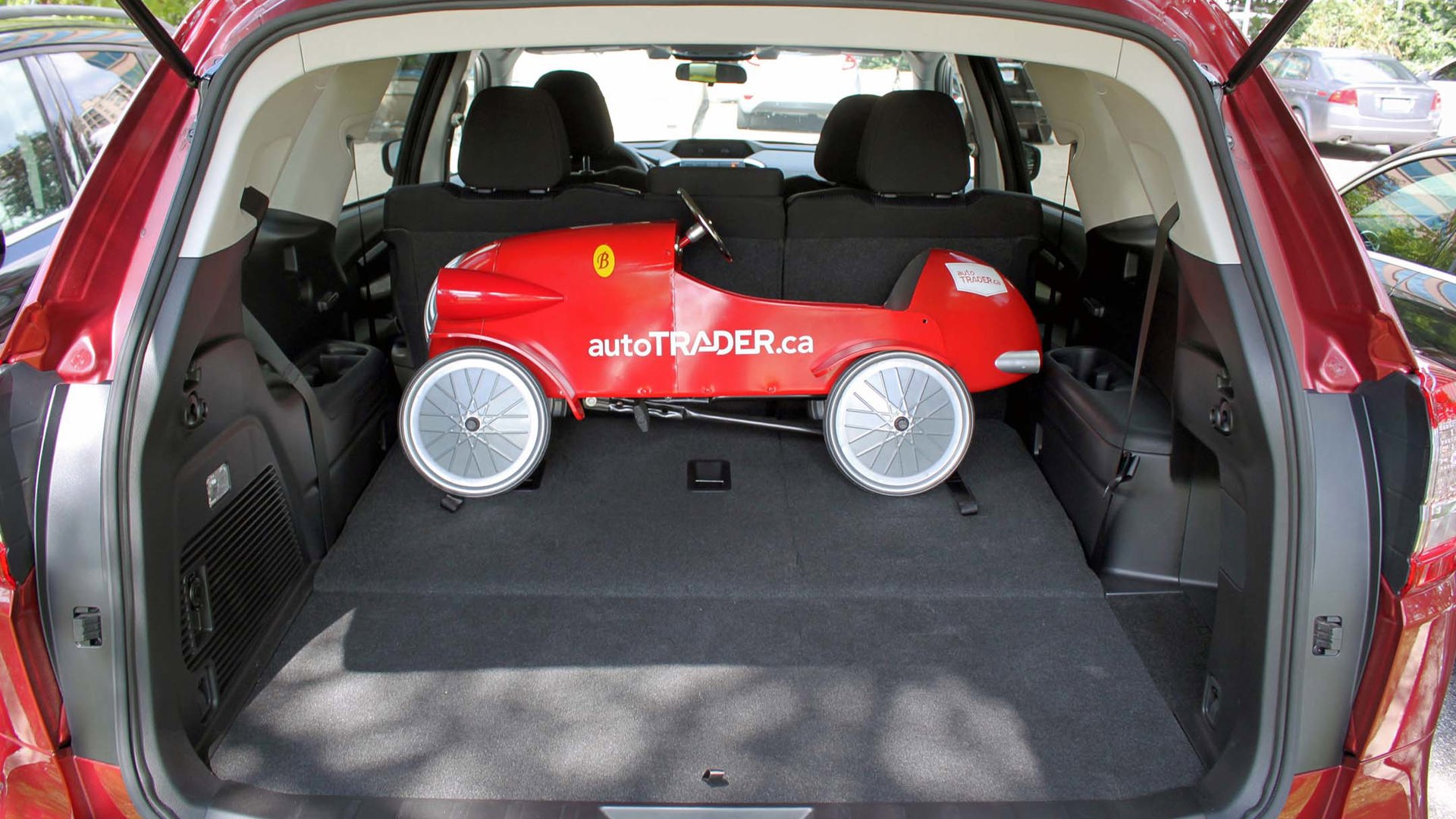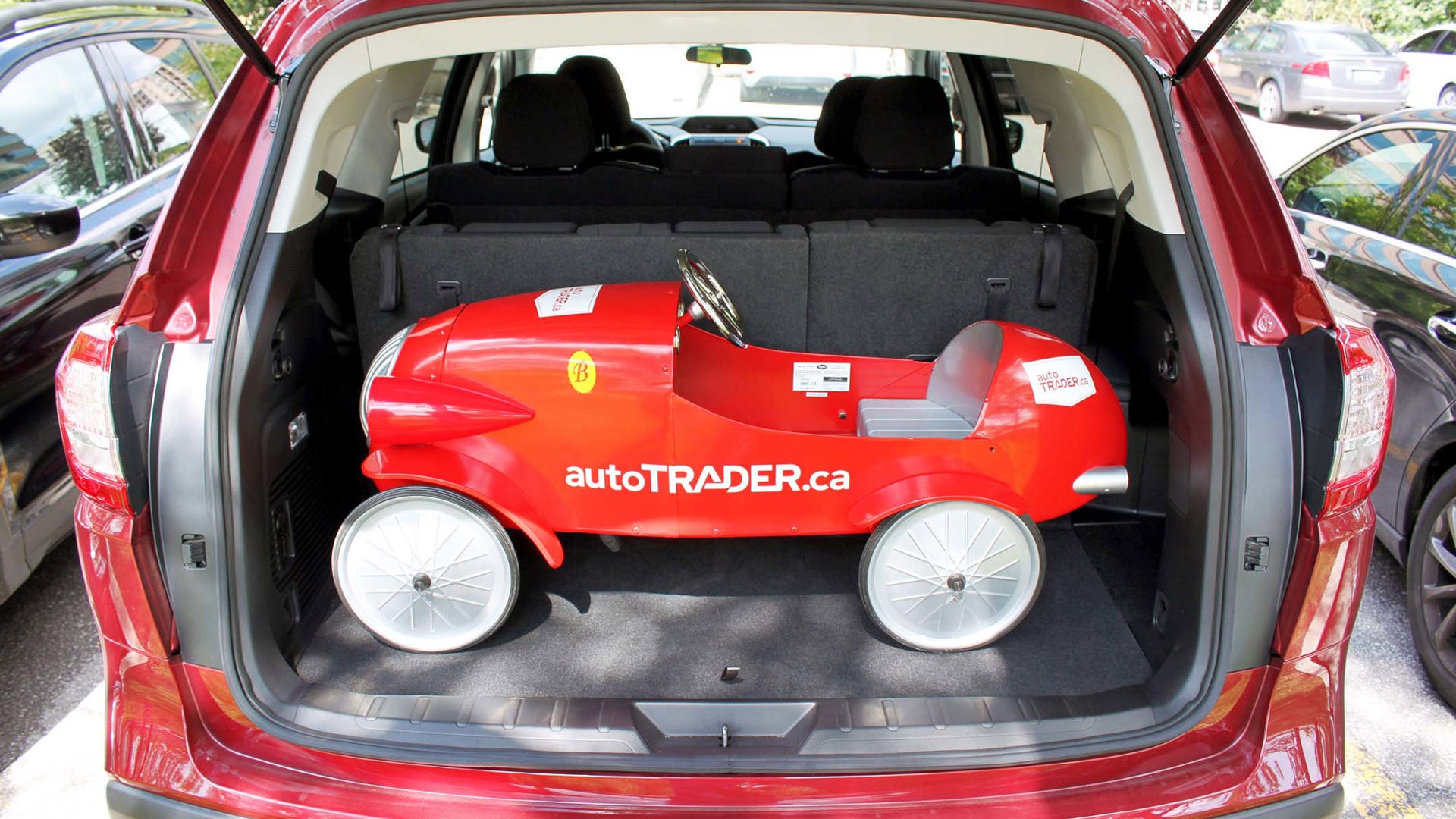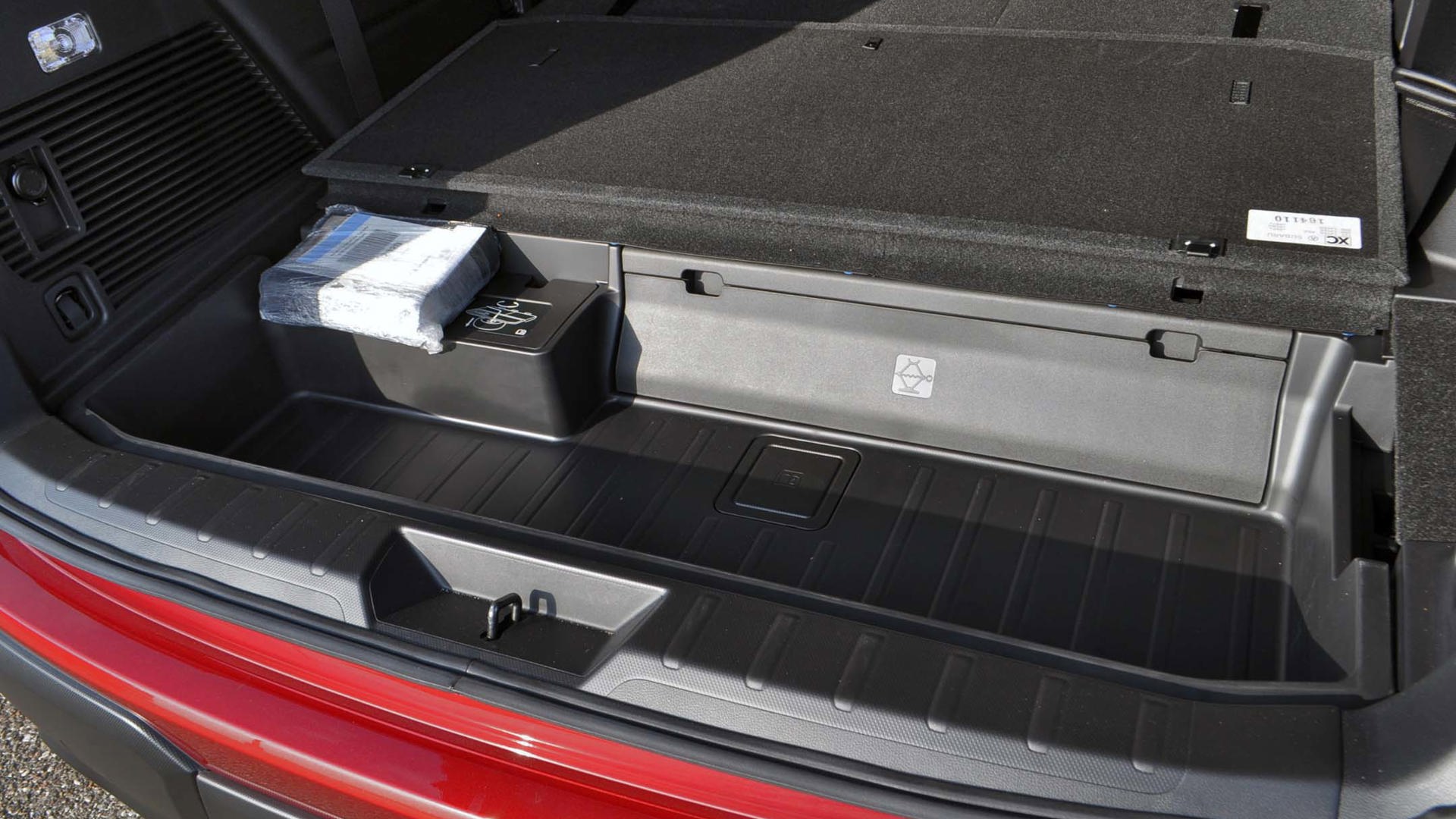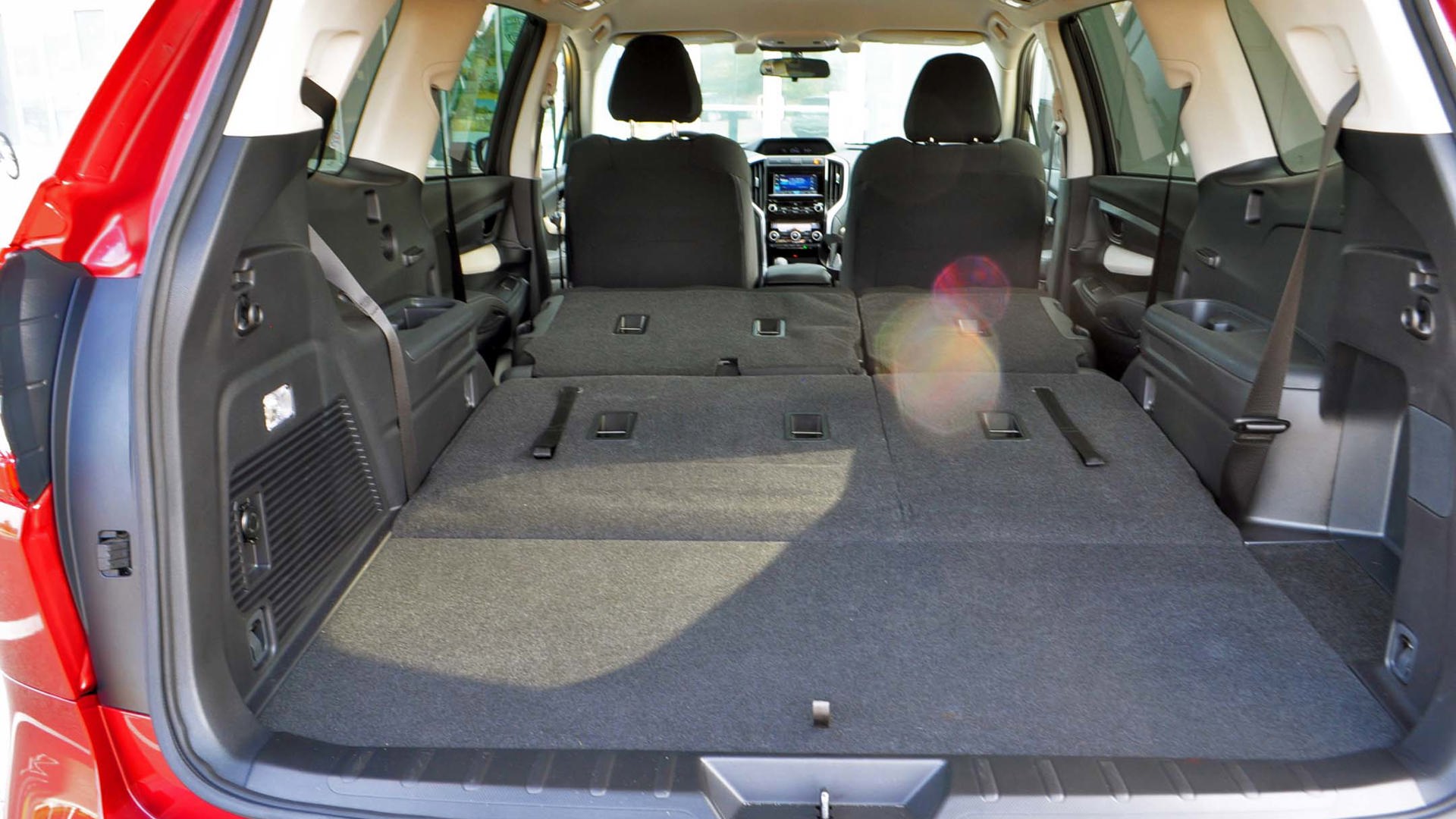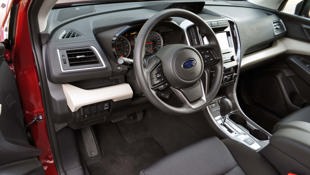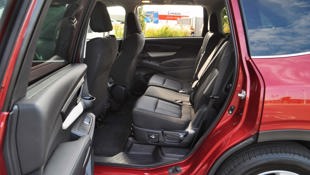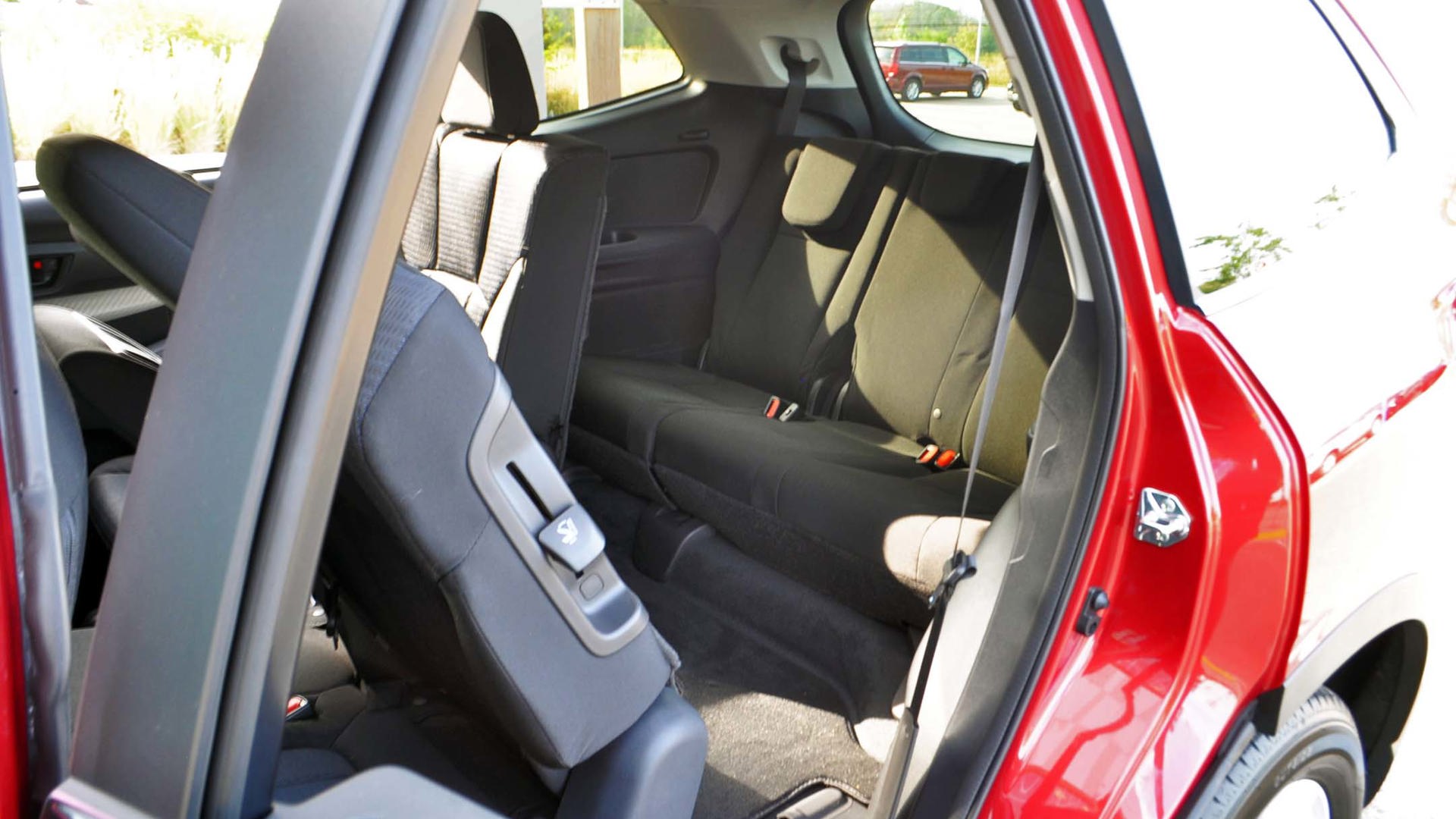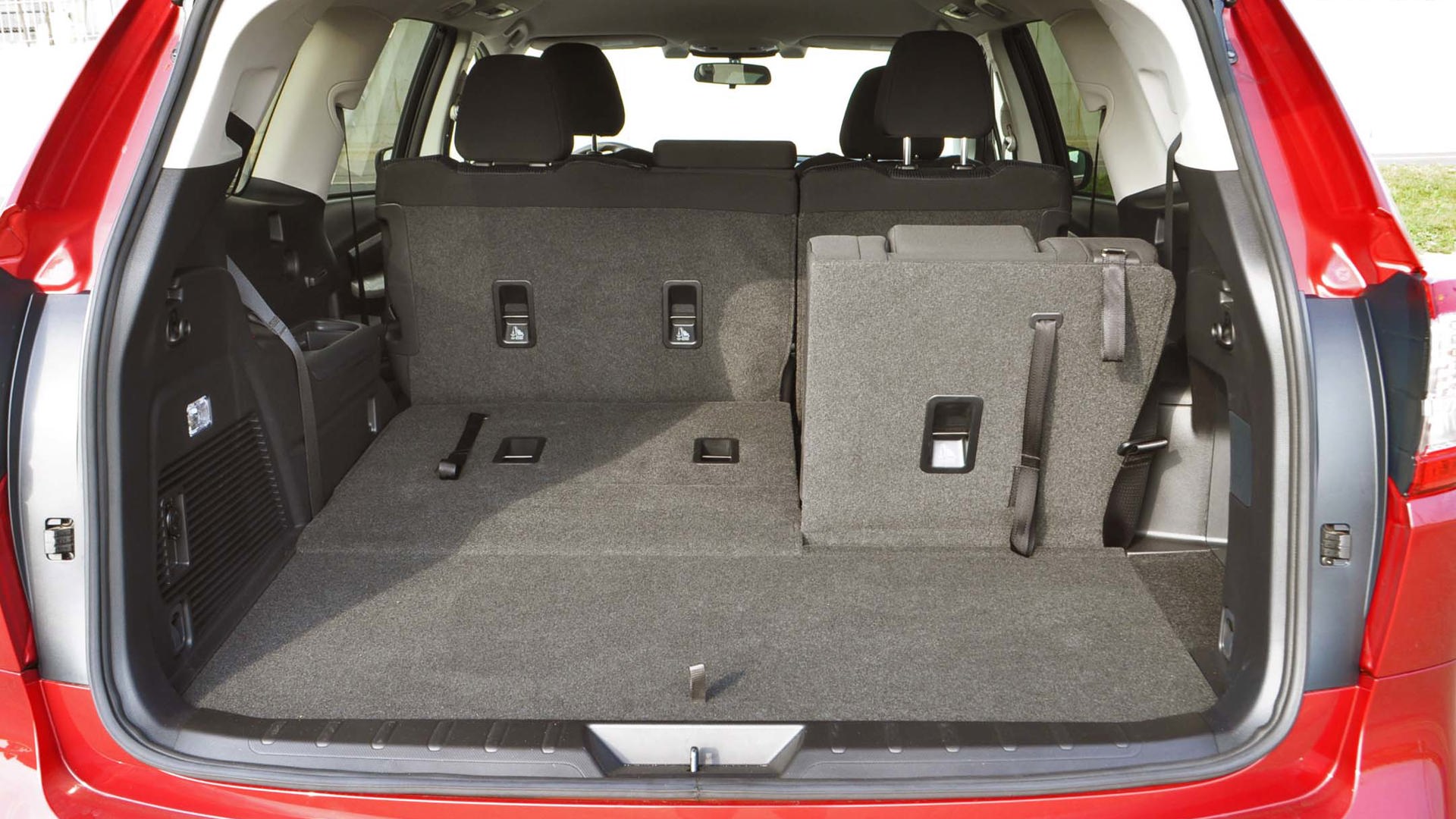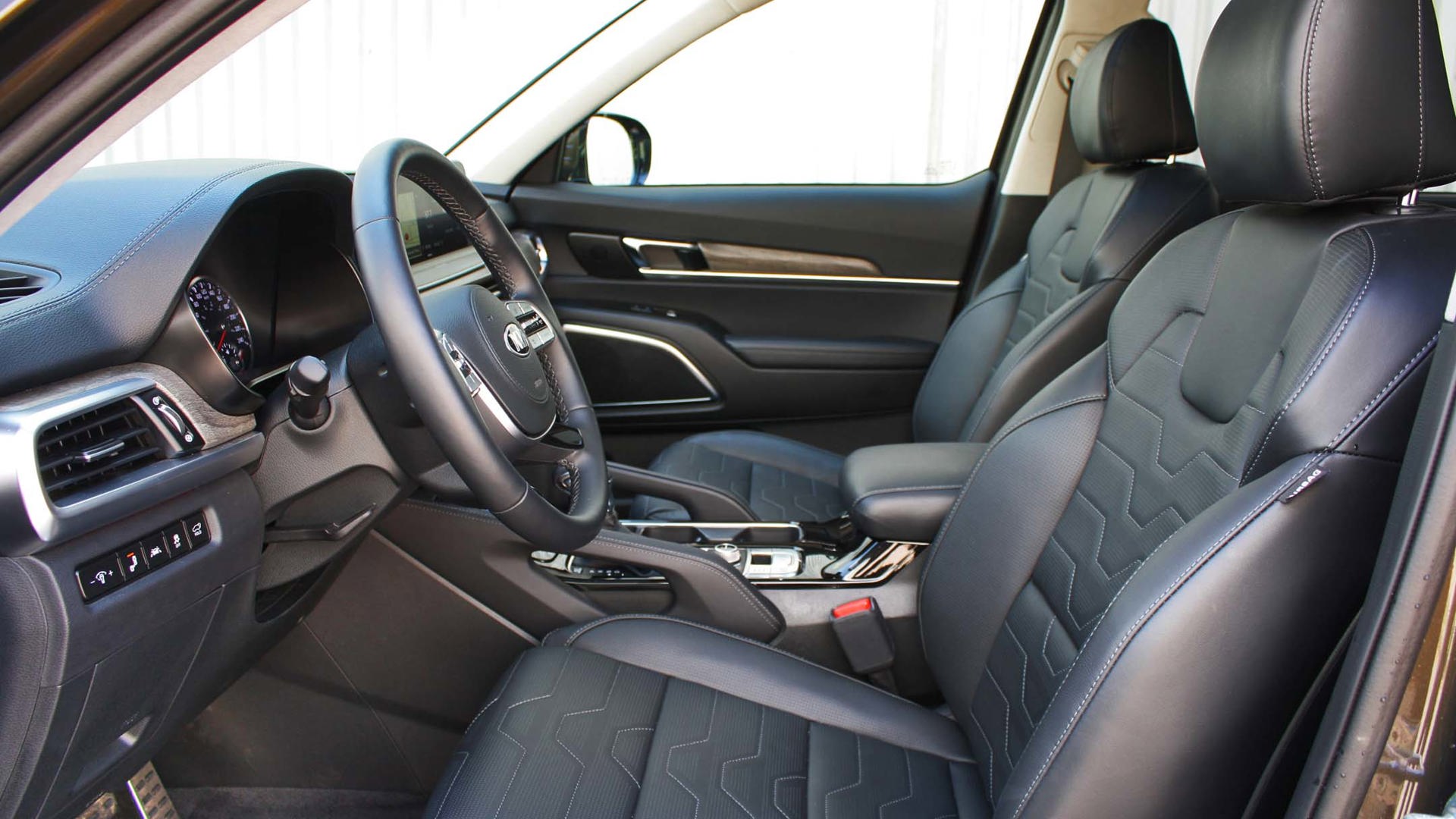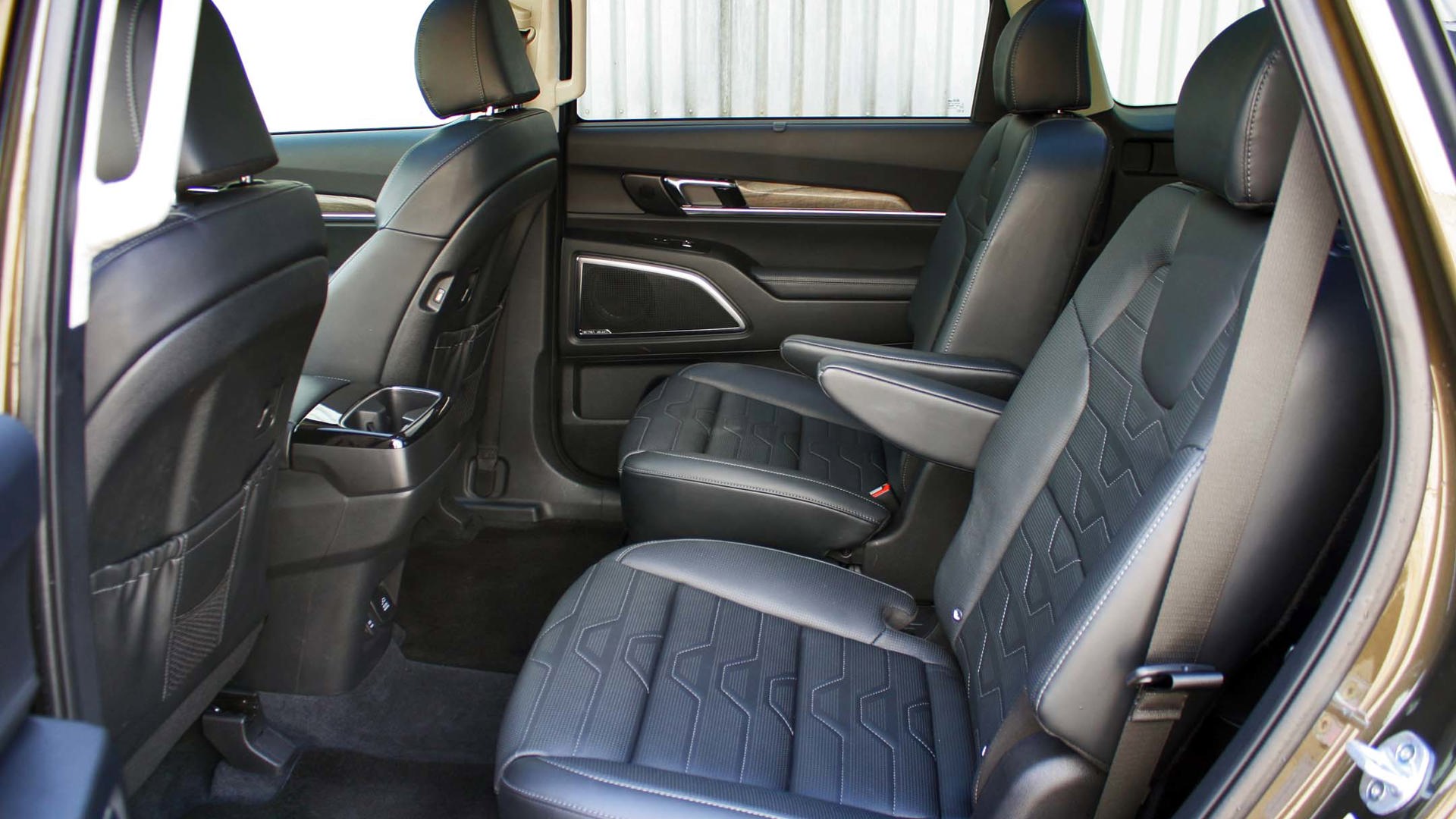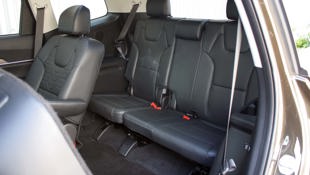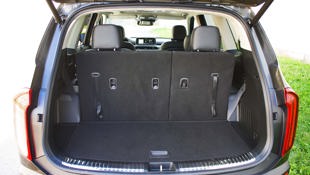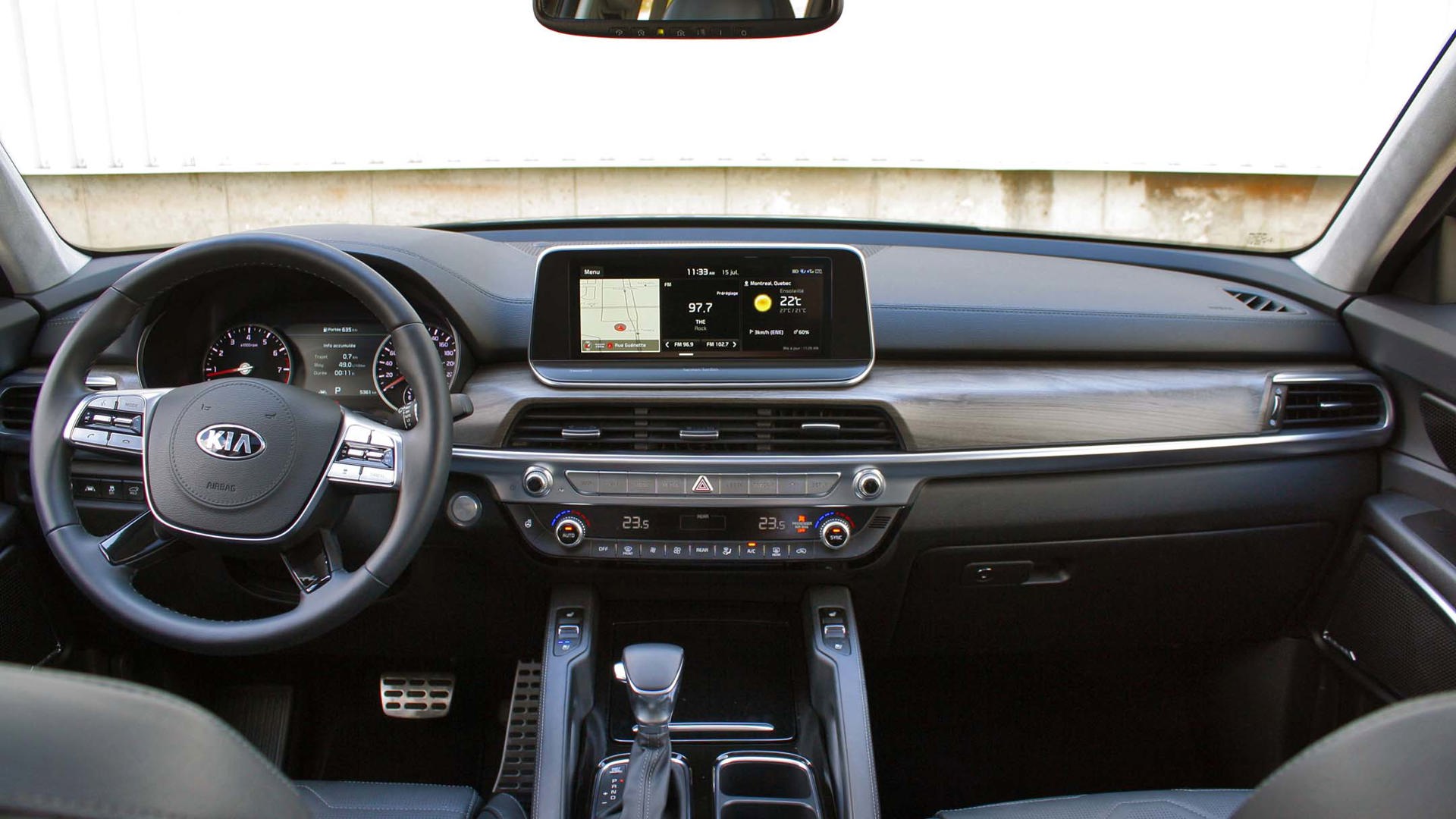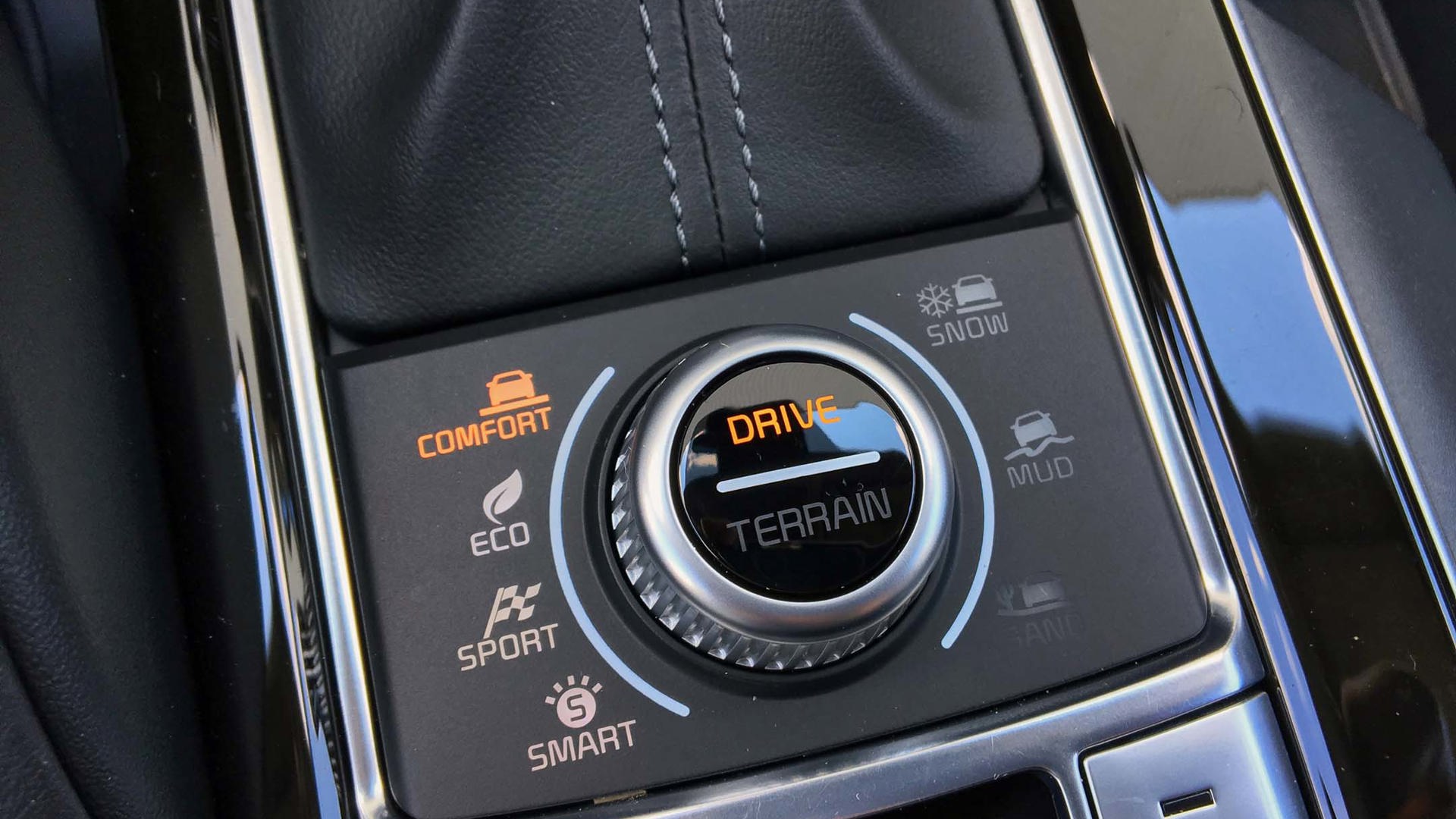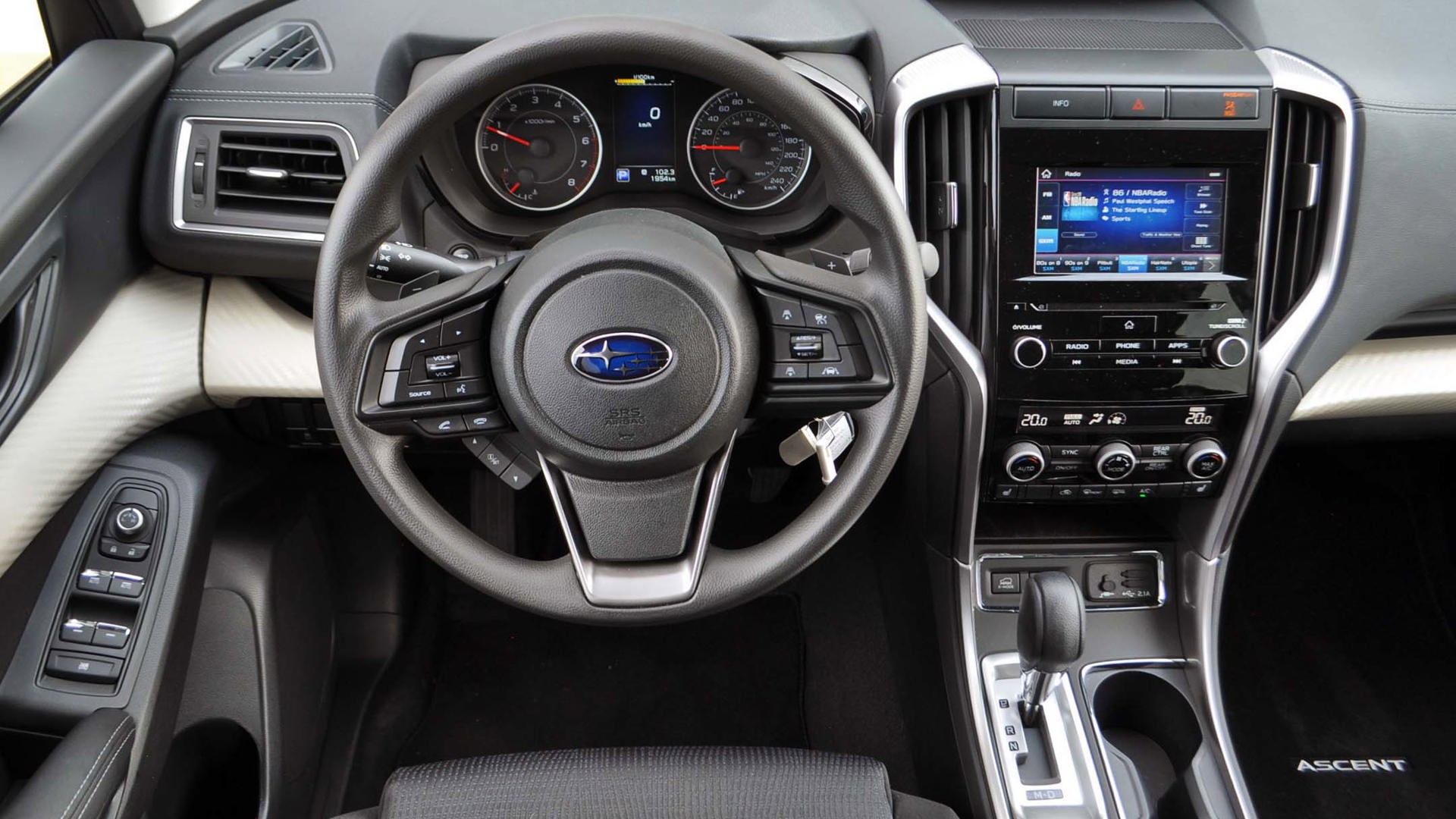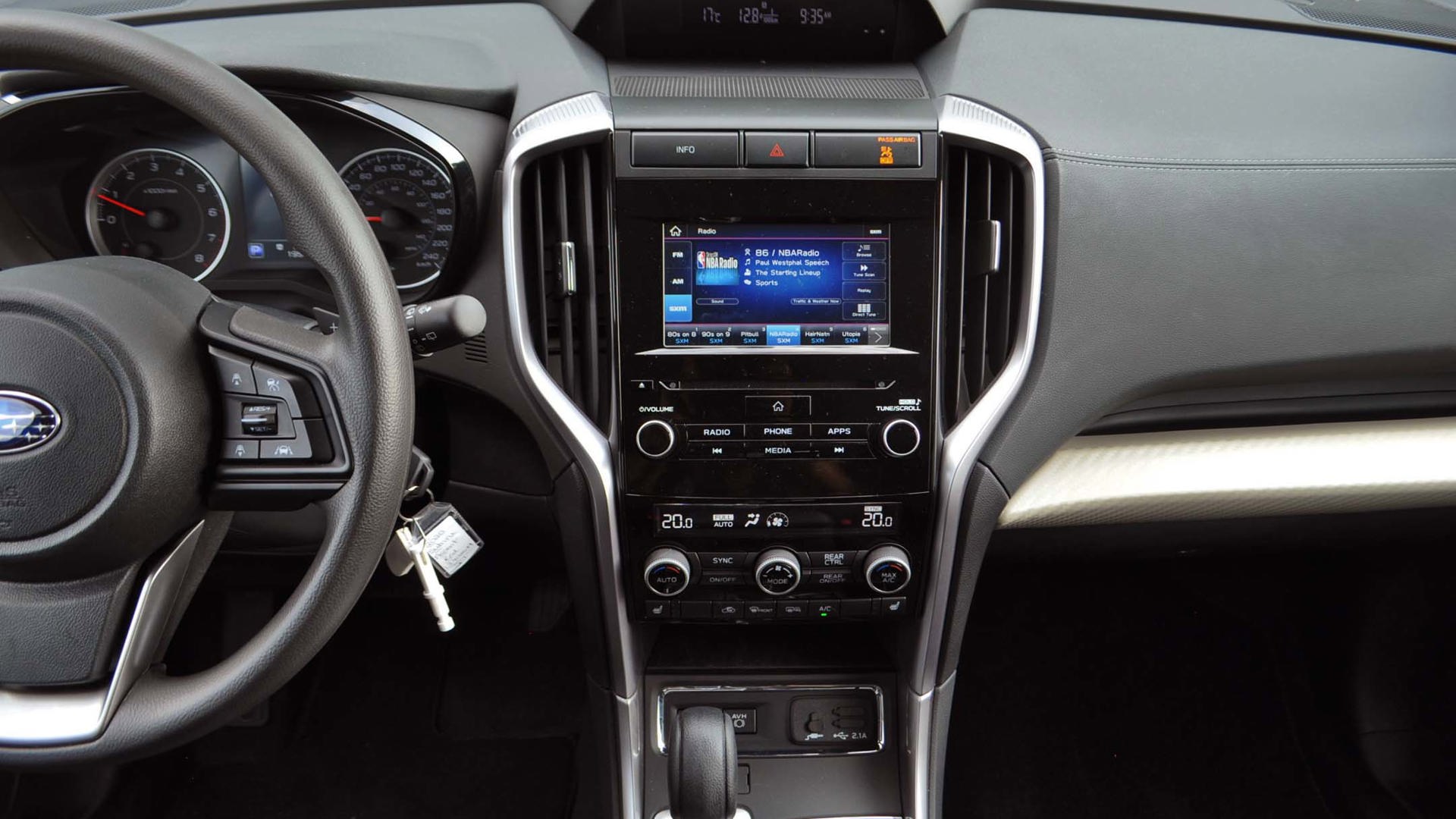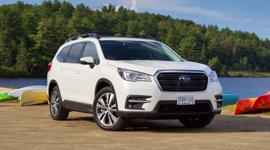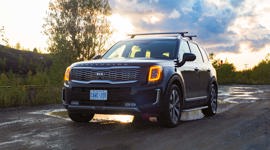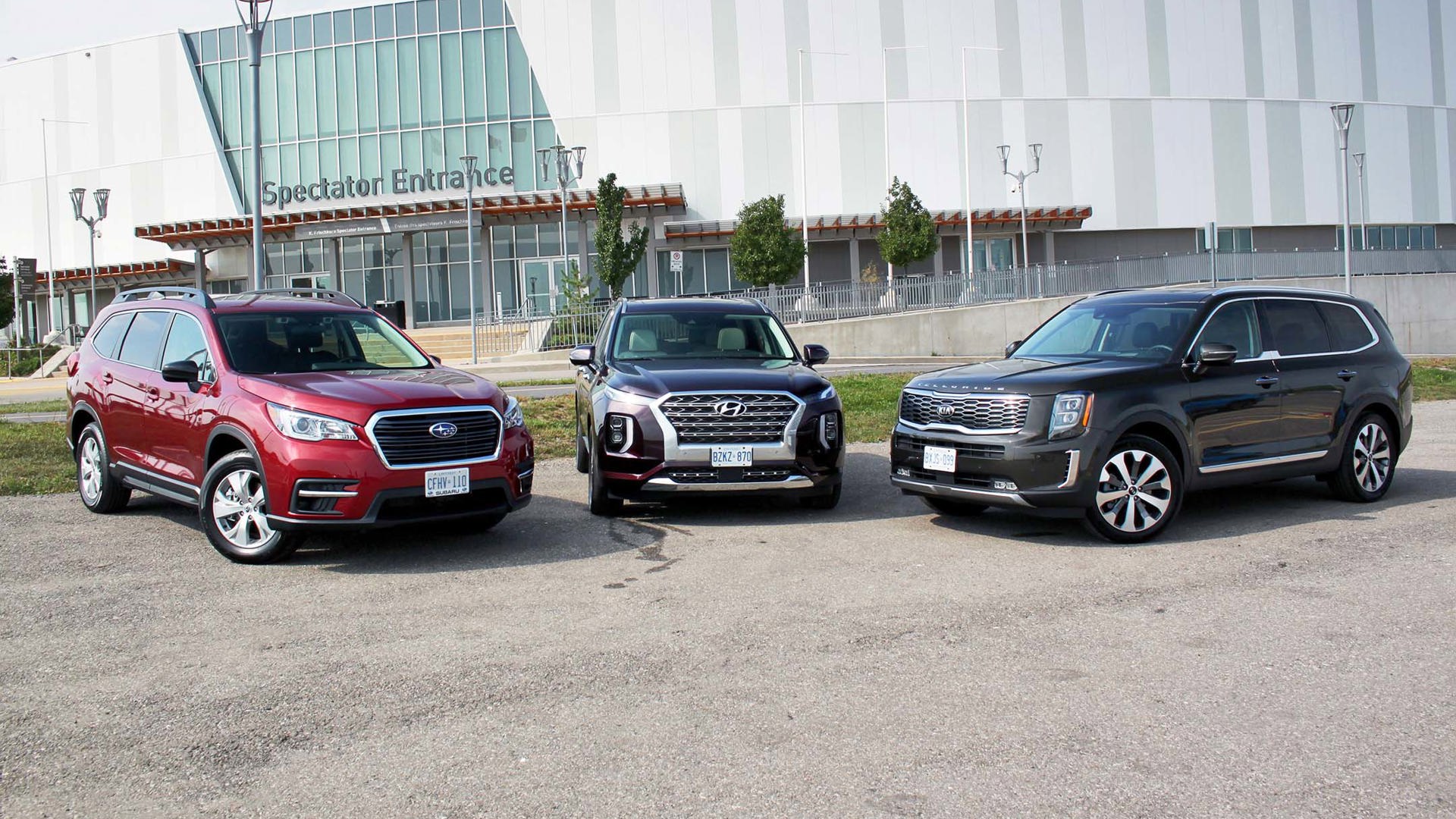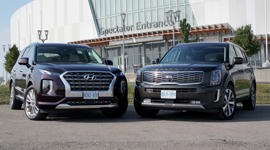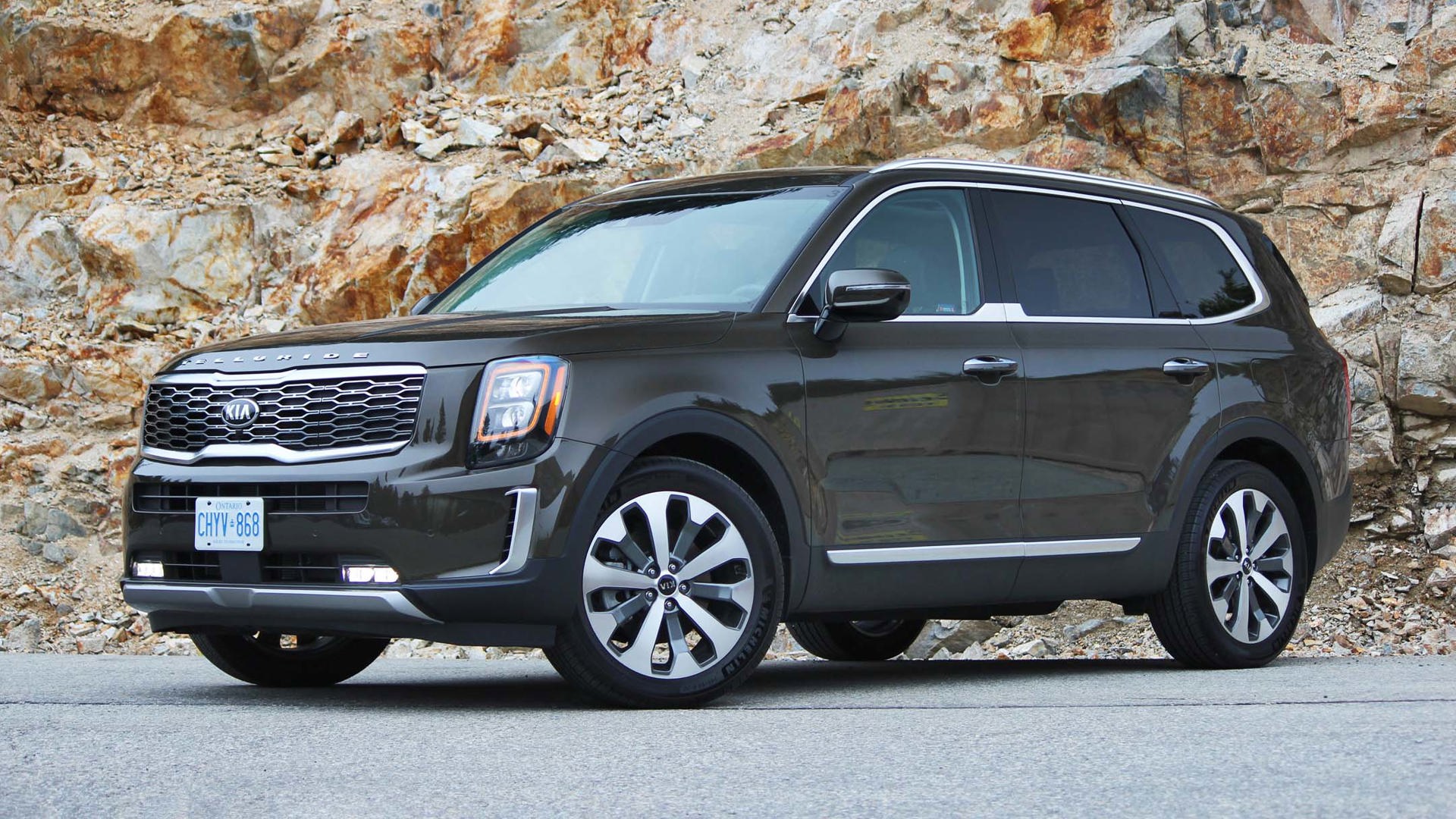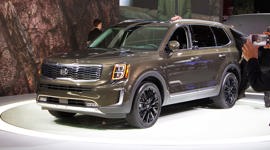Comparison Data
|
2020 Kia Telluride SX Limited with Nappa
|
2020 Subaru Ascent Convenience
|
|---|---|
|
Engine Displacement
3.8L
|
2.4L
|
|
Engine Cylinders
V6
|
H4
|
|
Peak Horsepower
291 hp @ 6,000 rpm
|
260 hp @ 5,600 rpm
|
|
Peak Torque
262 lb-ft @ 5,200 rpm
|
277 lb-ft @ 2,000–4,000 rpm
|
|
Fuel Economy
12.5/9.6/11.2 L/100 km cty/hwy/cmb
|
11.6/9.0/10.4 L/100 km cty/hwy/cmb
|
|
Cargo Space
601 / 1,304 / 2,455 L behind 3rd/2nd/1st row
|
504 / 1,345 / 2,449 L behind 3rd/2nd/1st row
|
|
Base Price
$53,995
|
$36,695
|
|
A/C Tax
$100
|
$100
|
|
Destination Fee
$1,895
|
$1,800
|
|
Price as Tested
$56,190
|
$38,595
|
|
Optional Equipment
$200
|
None
|
Subaru has been bringing a steady stream of new and updated vehicles to market – and to critical acclaim. The automaker’s three-row SUV, the Ascent, is all new and showcases some clever engineering in adapting its philosophies and experiences to a larger vehicle. This Ascent is the largest vehicle Subaru makes, making it ideally sized to take on Kia’s largest SUV, the Telluride, which pushes the Korean automaker towards a more premium market.
Exterior Styling
This is an easy pick as the Ascent lacks a distinct identity on the road, while the Telluride is chock-full of personality. Bold and rugged-looking, the Telluride leaves an impression on everyone who sees it, with its boxy dimensions, large grille, and vertically oriented lights. It’s large and looks like it owns the road. Simply put, it looks like a boss while leaving behind the overinflated image associated with luxury brands.
It’s much more interesting to look at compared to the Ascent, which looks like a large Forester. Subaru’s designers might want to spend more time making its vehicles look modern, as the rest of the car is fairly up-to-date. That said, buyers who want an understated ride will be satisfied with the Ascent.
Kia Telluride Styling: 8
Subaru Ascent Styling: 6
Interior Styling
The trends from the exterior extend to the interior as well. The Telluride exudes a premium feel the moment you open the door. Nappa leather upholstery helps Kia further the new brand image it started with the Kia Stinger GT to a new nameplate. It’s clear that the automaker is looking to rid itself of its “cheap and cheerful” status, and the Telluride seems to hold nothing back. Even the headliner is an impressive-feeling Alacantara-like material that is a step forward for this class of vehicle. There are nice accents on the dash, although the buttons can feel a bit too familiar compared to models like the Sorento and Optima, which doesn’t help in the push upmarket. The interior also features piano-black accents that look and feel slightly less premium than most of the rest of the cabin.
The Ascent itself can’t be blamed for losing this portion of the test. Our tester was a base Convenience trim level, one that is devoid of any frills to satisfy a shockingly low price. The layout is simple and easy to get accustomed to, and we’ve experienced fully loaded Ascent Premier models in the past which are lavishly appointed with gorgeous leather that does give the Telluride decent competition. However, even in that top-spec, the Ascent falls behind when delivering a special or unique experience. It’s all stuff we’ve seen and felt before, that’s its downfall when compared to the surprising Kia.
Kia Telluride Interior Styling: 8
Subaru Ascent Interior Styling: 6
Interior Space and Practicality
Things even up when it comes to examining the space afforded by the two crossovers, and both provide plenty of cargo space. The Telluride features 601 L of volume behind the third row, which expands to 1,304 L when that third row is folded down. Put the second row down, and owners get access to a total of 2,455 L. The figures with all the seats up – or down – exceed what’s offered by the Ascent, but it might be a better fit if you’re the type to keep the third row stowed, offering more space in that configuration.
Interior space in the Kia is plentiful, and buyers will appreciate the excellent headroom in the front and rear seats. The third row feels a bit more comfortable than the Subaru’s, especially the seat backs and cushions, which seem more substantial.
The Ascent features 504 L of storage with all seats up, 1,345 L with the third row down, and 2,449 L with both second and third rows folded down. It does seem like the better choice for owners who use the second row but leave the third row down.
The interior space in the Ascent isn’t bad, it just doesn’t feel as airy as the Telluride does. The cloth seats feel plush and soft, but the third row feels stiff and uncomfortable. Our base tester also features seating for eight, as there’s a bench seat in the second row rather than bucket seats. Getting in and out of the third row seems to be easier in the Ascent, but depending on your height and coordination, you may always look a little graceless entering the third row of some bigger SUVs.
Kia Telluride Space and Practicality: 8
Subaru Ascent Space and Practicality: 8
Features
The Kia Telluride boasts some impressive features for the driver and passengers. For folks sitting in the second row, they’re treated to heated and ventilated seats, as well as USB ports to charge their devices. Our tester also featured a two-window panoramic sunroof to further the airy feel of the crossover. There’s also a three-zone automatic climate control function to give passengers more control over their comfort.
Up by the front seats, which are also heated and ventilated, the vehicle features a wireless charging pad for smartphones, while the driver gets to enjoy a heated steering wheel. The driver also has a surplus of information available via a head-up display. There’s a large infotainment system that includes navigation and support for Android Auto and Apple CarPlay. We had no complaints with the Harman Kardon sound system, although passengers did think we overused the PA system that allows drivers to project their voice to the rear speakers. There is also a feature that disables all the speakers in the rear of the vehicle, so the driver and front passenger can enjoy their media while the rest of the passengers nap. The windows in the second row have manual sunshades as well, so naptime can even occur while the sun is still out.
The Convenience-spec Ascent is far less feature-filled, but it still has its perks. Heated seats are found in the front seats, as is three-zone automatic climate control. There are a few USB ports to be found, but no wireless charging in this vehicle. Higher trim vehicles feature more USB ports, and a household AC plug in the rear, but some features are nonetheless missing here. The base Ascent doesn’t have navigation, but it does feature support for Android Auto and Apple CarPlay, so buyers aren’t completely left in the dark. If it seems bleak for the Subaru, don’t fear, there are plenty of powertrain and safety features that are included as standard equipment.
Kia Telluride Features: 8
Subaru Ascent Features: 6
Powertrains:
The Kia Telluride sports a 3.8L V6 in its engine bay, a motor capable of 291 hp and 262 lb-ft of torque. It pairs with an eight-speed automatic transmission that sends power to all four wheels. The power delivery and driving feel can be customized a bit using a small knob on the centre console. That means drivers can select Sport, Eco, or Smart driving modes, which impact the way the throttle is managed as well as how gear shifts are handled. Sport mode sees the powertrain hanging onto gears a bit longer, and provides the driver with a better idea of the ponies available to their right foot. There are a few off-road settings as well, which change the way the all-wheel drive system behaves, as well as the stability and traction control settings so that drivers can feel a bit more confident in varying road surfaces. The Telluride is set up to tow 5,000 lb.
The Subaru makes a bit less power but more torque thanks to a turbocharged 2.4L flat-four engine. Officially rated at 260 hp and 277 lb-ft of torque, the automaker pairs the motor with a CVT and Subaru’s full-time all-wheel drive. This setup can feel a bit more responsive thanks to aggressive gearing at lower speeds and the abundance of torque early on in the rpm range. There are far fewer drive mode settings in the Ascent, with the main option being X-Mode, which is Subaru’s off-road do-all cheat code. This feature optimizes the all-wheel drive and traction control systems, and even includes hill descent control for the adventurous types that see themselves off-roading. In addition to X-Mode, Subaru’s CVT has paddle shifters to swap through a few pre-selected gear ratios, something that should help those uncomfortable with the feel of CVTs. In its base form, the Ascent can tow just 2,000 lb, but properly equipped models can tow 5,000 lb.
Kia Telluride Powertrain: 8
Subaru Ascent Powertrain: 8
Fuel Economy:
Despite an eight-speed gearbox, an eco-minded drive mode, and automatic engine stop-start technology, the Kia Telluride just can’t compete with the Subaru Ascent in terms of fuel economy. Natural Resources Canada (NRCan) pegs the Kia at 12.5 L/100 km in city driving and 9.6 on highway sprints.
The turbocharged engine in the Subaru seems far more fuel-conscious, but then again, it is smaller and less powerful. The NRCan ratings for the Ascent are far more flattering than the Kia’s. Expect it to return 11.6 L/100 km in city driving conditions and 9.0 on the highway – both great for a three-row vehicle.
Kia Telluride Fuel Economy: 6
Subaru Ascent Fuel Economy 8
Driving Feel
The two vehicles behave very differently on the road. The Kia feels planted, confident, and premium. However, it drives just as large as it looks, meaning it can sometimes feel a bit oversized for city roads. Additionally, it never feels anything close to what can be described as agile. The powertrain can sometimes feel a bit overwhelmed at low speeds but feels more capable at higher speeds, like when initiating a pass. Gear changes aren’t always a crisp as they could be though, and sometimes the Kia stumbles when selecting a gear.
The Telluride is extremely quiet though, and you’ll mostly hear wind noise, a result of its boxy design. Ride quality is extremely smooth and we’re sure the self-levelling rear suspension has something to do with that. Overall, the Telluride feels like a higher-end vehicle, with limited rattles and clunks over rough pavement and a hefty feel behind the wheel.
The Subaru Ascent feels much smaller than it is. It has a bit more body roll and pitch when cornering, accelerating and hitting the brakes, but it responds quickly to inputs and never feels like it is at the mercy of its size and weight. The steering feels more natural, unlike the Kia’s which can feel much too light at times. There isn’t much to complain about with the engine and transmission, except that it’s a noisier experience than the Kia. The ride quality is choppy compared to the Kia, and you’ll hear a few more noises coming from the suspension as well. Driving the Ascent doesn’t provide the same sense of bulletproof confidence that the Telluride has, but it is responsive, making it enjoyable to drive in its own right.
Kia Telluride Driving Feel: 7.5
Subaru Ascent Driving Feel: 7
Safety
Safety is a major factor for both vehicles. Many buy big vehicles like this to feel safer and more noticeable on the road, not to mention for the added visibility that befits a higher-riding vehicle. The two crossovers also feature a ton of safety features. For example, the Telluride offers a forward-collision warning, automatic emergency braking, lane-keeping assistance and adaptive cruise control. There is also an LCD screen in the gauge cluster that can display a feed of what’s happening beside the vehicle whenever the lane change indicator is triggered. This works as a detailed blind spot indicator, and in case you’re old-school and check mirrors properly, there are indicators there too. The Insurance Institute for Highway Safety (IIHS) has assessed the Telluride with a Top Safety Pick, which is the second-highest award a vehicle can earn.
The Subaru Ascent, however, earned a Top Safety Pick+ rating from the IIHS, and does it with much of the same features. Subaru’s EyeSight technology is standard, meaning buyers of even the most affordable Ascent get automatic emergency braking, adaptive cruise control and lane-keeping assistance. That’s a hefty and useful suite of equipment, but higher trim level models get blind-spot monitoring and rear automatic braking. Unlike the Telluride, though, the Ascent doesn’t have parking sensors, and its rearview camera is pretty limited in comparison to the multiple angles the Kia has.
Kia Telluride Safety: 8
Subaru Ascent Safety: 8.5
Value
It’s tough to judge two crossovers on different ends of the price spectrum, but each car has a strong point to make about value. The Kia Telluride says you can get a rich, high-end, and feature-filled experience for relatively little money. Our fully loaded Telluride carried an MSRP of $54,195 and has just about every feature you can think of. That includes safety equipment, driver’s assistance, and even family-friendly helpful features to keep people in the car comfortable. It’s also plenty spacious and very practical. It will exceed your expectations for a crossover in this segment and will easily make life easier on you and your kids.
The Subaru Ascent Convenience, on the other hand, has an asking price of $36,695. The Kia is about 30 percent more expensive than the Kia, but is it 30 percent worse? It’s just as practical, fairly good to drive and comes standard all-wheel drive and all that safety equipment. If you’re on a strict budget, the base Ascent will still meet your needs for a family hauler, even if it doesn’t come with a power liftgate, head-up display, or fancy infotainment system.
Kia Telluride Value: 8
Subaru Ascent Value: 7.5
The Verdict
If you have the money to spend on the Telluride, especially a fully loaded example like the model we’ve tested, it’s money wisely spent. The Kia has features that are usually found on luxury cars, and a bold design that will keep you smitten with it.
However, if you’re strapped for cash, the Ascent isn’t a bad alternative. It’s not only cheaper but better on fuel and plenty spacious. It just isn’t as special as the Kia, and that’s where the higher cost of the Telluride comes into play – and help deliver the victory.
Kia Telluride final score: 69.5
Subaru Ascent Final Score: 65
